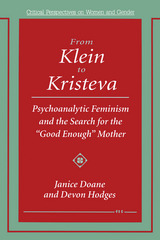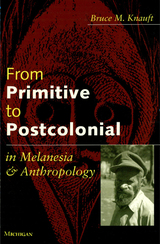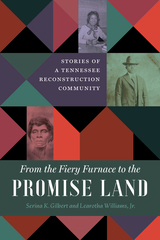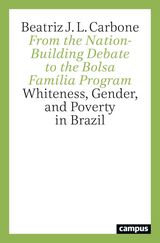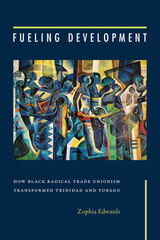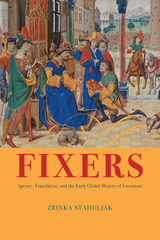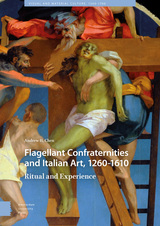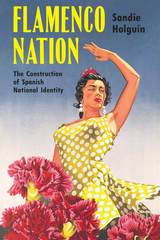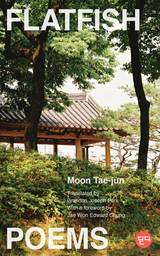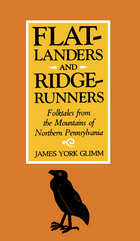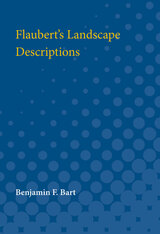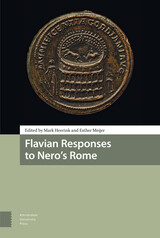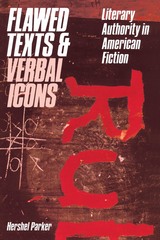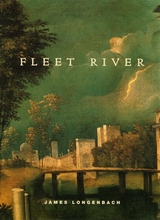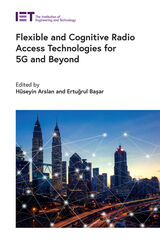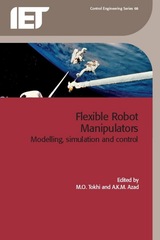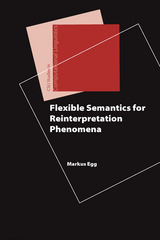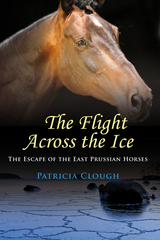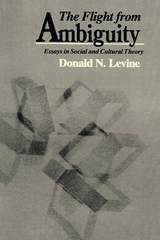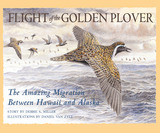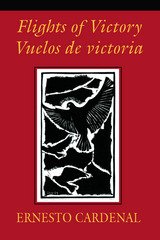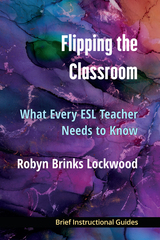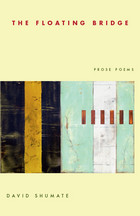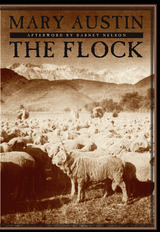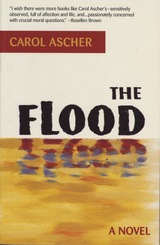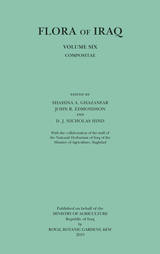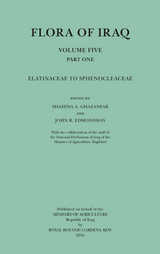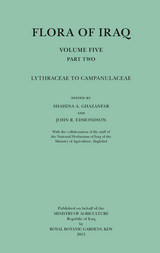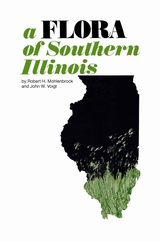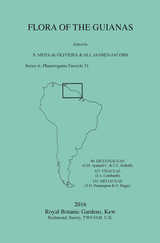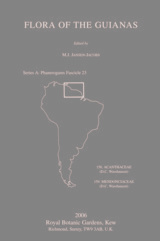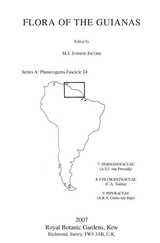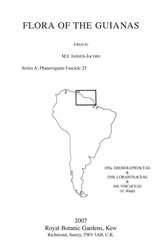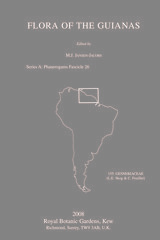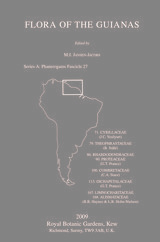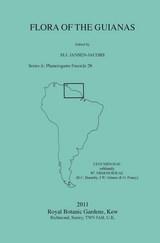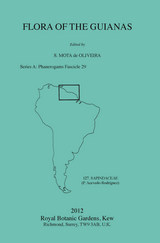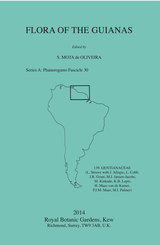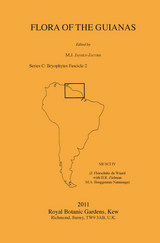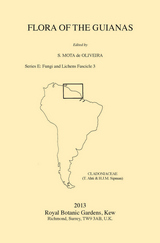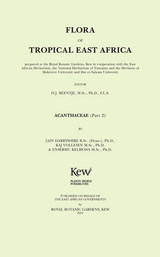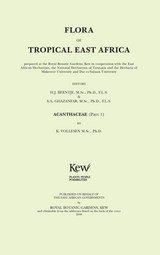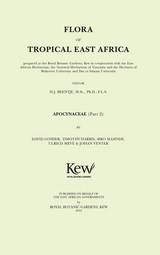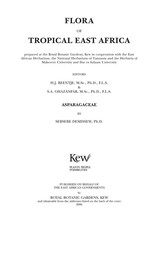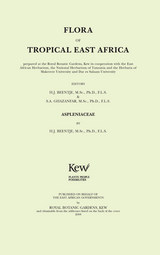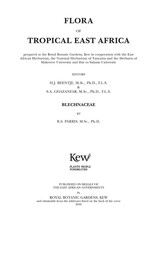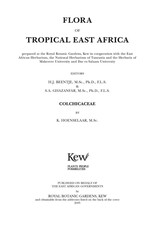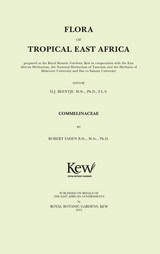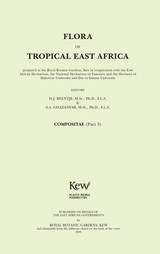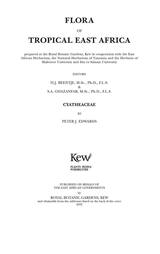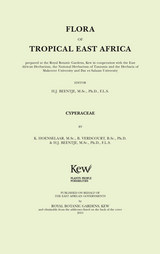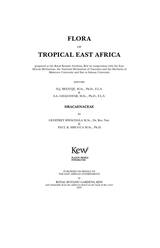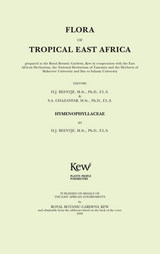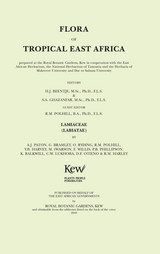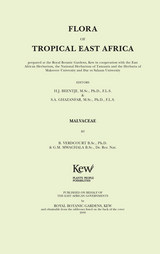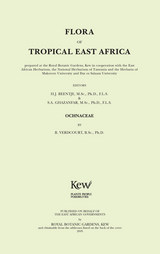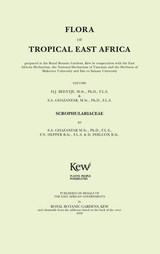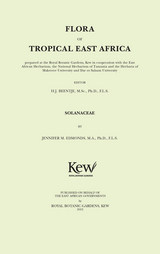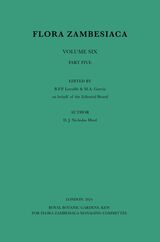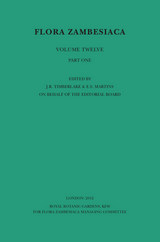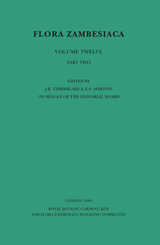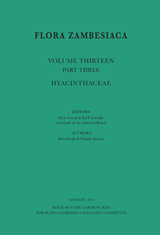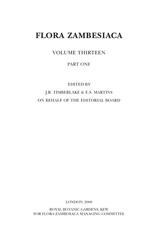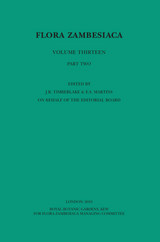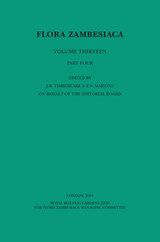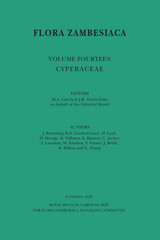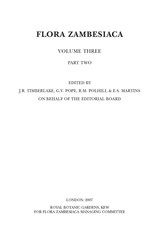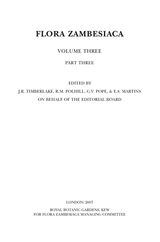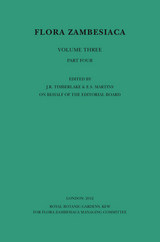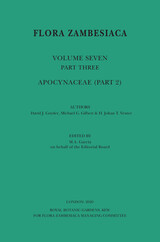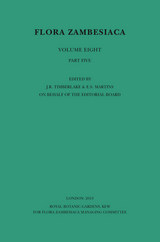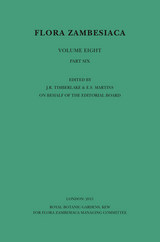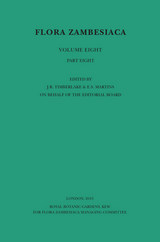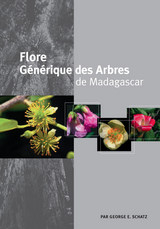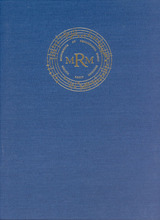 The Fix
Lisa Wells
University of Iowa Press, 2018 Proceeding from Hélène Cixous’s charge to “kill the false woman who is preventing the live one from breathing,” The Fix forges that woman’s reckoning with her violent past, with her sexuality, and with a future unmoored from the trappings of domestic life. These poems of lyric beauty and unflinching candor negotiate the terrain of contradictory desire—often to darkly comedic effect. In encounters with strangers in dive bars and on highway shoulders, and through ekphrastic engagement with visionaries like William Blake, José Clemente Orozco, and the Talking Heads, this book seeks the real beneath the dissembling surface. Here, nothing is fixed, but grace arrives by diving into the complicated past in order to find a way to live, now. “Woman Seated with Thighs Apart” Often I am permitted to return to this kitchen tipsy, pinned to the fridge, to the precise instant the kiss smashed in. When the jaws of night are grinding and the double bed is half asleep the snore beside me syncs to the traffic light, pulsing red, ragged up in the linen curtain. I leak such solicitous sighs to asphalt, slicked with black ice, high beams speed over my body whole while the drugstore weeps its remedy in strident neon throbs— I doubt I’ll make it out. It’s a cold country. It’s the sting of quarantine. It’s my own two hands working deep inside the sheets.
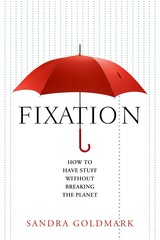 Fixation: How to Have Stuff without Breaking the Planet
Sandra Goldmark
Island Press, 2020 Our massive, global system of consumption is broken. Our individual relationship with our stuff is broken. In each of our homes, some stuff is broken. And the strain of rampant consumerism and manufacturing is breaking our planet. We need big, systemic changes, from public policy to global economic systems. But we don’t need to wait for them.
Since founding Fixup, a pop-up repair shop that brought her coverage in The New York Times, Salon, New York Public Radio, and more, Sandra Goldmark has become a leader in the movement to demand better “stuff.” She doesn’t just want to help us clear clutter—she aims to move us away from throwaway culture, to teach us to reuse and repurpose more thoughtfully, and to urge companies to produce better stuff. Although her goal is ambitious, the solution to getting there is surprisingly simple and involves all of us: have good stuff, not too much, mostly reclaimed, care for it, and pass it on.
Fixation charts the path to the next frontier in the health, wellness, and environmental movements—learning how to value stewardship over waste. We can choose quality items designed for a long lifecycle, commit to repairing them when they break, and shift our perspective on reuse and “preowned” goods. Together, we can demand that companies get on board. Goldmark shares examples of forward-thinking companies that are thriving by conducting their businesses sustainably and responsibly.
Passionate, wise, and practical, Fixation offers us a new understanding of stuff by building a value chain where good design, reuse, and repair are the status quo.
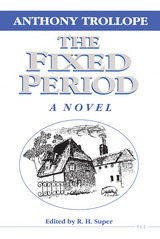 The Fixed Period
Anthony Trollope
University of Michigan Press, 1990 At a time when concern over the ethics of euthanasia and the implications of a rapidly aging population are frequent topics of discussion, Trollope’s only science fiction novel strikes a very modern chord. The Fixed Period, begun in 1880 when Trollope was 65, is set in the then far-distant year of 1980. The story is narrated by the president of the fictitious Republic of Britannula, an ex-British colony on an imaginary island near New Zealand. The original young settlers, led by their president, adopt a plan called the Fixed Period. Under this plan, the island would be relieved of the burden of an aging population by calling for compulsory euthanasia for citizens reaching the age of 67. Opposition to the plan grows as the time approaches for “depositing” the first citizen in the euthanasia park, and the elderly citizens successfully persuade the British government to send a gunboat armed with a powerful new weapon to reannex the country.
Trollope’s satiric portrayal of the statisticians who calculate the savings to be realized by putting the old people away before they become an expensive catastrophic burden, and the ironic presentation of the narrator’s justification of euthanasia by appeal to Christian practice and doctrine, will delight contemporary readers. Trollope’s strong dislike of government bureaucracy is evident throughout, as is his awareness of the dangers to the world of an imagined weapon of destruction not unlike (in its effect) the atomic bomb.
In making accessible the complete text of this work with corrections from the original manuscript, Super has performed an invaluable service for Trollope scholars and enthusiasts.
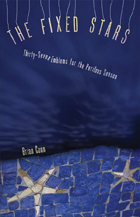 The Fixed Stars: Thirty-Seven Emblems for the Perilous Season
Brian Conn
University of Alabama Press, 2010 A fable-like tale of a small community afflicted by a mysterious plague Juxtaposing barbarity and whimsy, Brian Conn’s The Fixed Stars is a novel that has the tenor of a contemporary fable with nearly the same dreamlike logic. At the novel’s heart are the John’s Day celebration and the interactions of a small community dealing with a mystery disease. Routinely citizens are quarantined and then reintegrated into society in rituals marked by a haunting brutality. The infected and the healthy alike are quarantined. In a culture that has retreated from urbanism into a more pastoral society, the woman who nurtures spiders and the man who spins hemp exist alongside the mass acceptance of sexual promiscuity. Conn delivers a compelling portrait of a calamitous era, one tormented by pestilence, disease, violence, and post–late capitalism. An unflinching look at a world impossible to situate in time, The Fixed Stars is mythic and darkly magical.
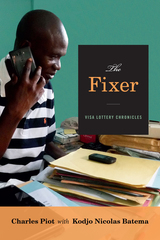 The Fixer: Visa Lottery Chronicles
Charles Piot with Kodjo Nicolas Batema
Duke University Press, 2019 In the West African nation of Togo, applying for the U.S. Diversity Visa Lottery is a national obsession, with hundreds of thousands of Togolese entering each year. From the street frenzy of the lottery sign-up period and the scramble to raise money for the embassy interview to the gamesmanship of those adding spouses and dependents to their dossiers, the application process is complicated, expensive, and unpredictable. In The Fixer Charles Piot follows Kodjo Nicolas Batema, a Togolese visa broker—known as a “fixer”—as he shepherds his clients through the application and interview process. Relaying the experiences of the fixer, his clients, and embassy officials, Piot captures the ever-evolving cat-and-mouse game between the embassy and the hopeful Togolese as well as the disappointments and successes of lottery winners in the United States. These detailed and compelling stories uniquely illustrate the desire and savviness of migrants as they work to find what they hope will be a better life.
Fixers: Agency, Translation, and the Early Global History of Literature
Zrinka Stahuljak
University of Chicago Press, 2024 A new history of early global literature that treats translators as active agents mediating cultures.
In this book, Zrinka Stahuljak challenges scholars in both medieval and translation studies to rethink how ideas and texts circulated in the medieval world. Whereas many view translators as mere conduits of authorial intention, Stahuljak proposes a new perspective rooted in a term from journalism: the fixer. With this language, Stahuljak captures the diverse, active roles medieval translators and interpreters played as mediators of entire cultures—insider informants, local guides, knowledge brokers, art distributors, and political players. Fixers offers nothing less than a new history of literature, art, translation, and social exchange from the perspective not of the author or state but of the fixer.
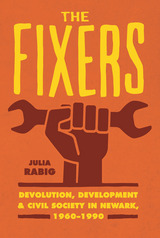 The Fixers: Devolution, Development, and Civil Society in Newark, 1960-1990
Julia Rabig
University of Chicago Press, 2016 Stories of Newark’s postwar decline are easy to find. But in The Fixers, Julia Rabig supplements these tales of misery with the story of the many imaginative challenges to the city’s decline mounted by Newark’s residents and suburban neighbors. In these pages, we meet the black nationalists whose dynamic organizing elected African American candidates in unprecedented numbers. There are tenants who mounted a historic rent strike to transform public housing and renegade white Catholic priests who joined black laywomen to pioneer the construction of low-income housing and influence housing policy. These are just a few of the “fixers” we meet—people who devised ways to work with limited resources and pull together the threads of a patchwork welfare state.
Rabig argues that fixers play dual roles. They support resistance, but also mediation; they fight for reform, but also more radical and far-reaching alternatives; they rally others to a collective cause, but sometimes they broker factions. Fixers reflect longer traditions of organizing while responding to the demands of their times. In so doing, they end up fixing (like a fixative) a new and enduring pattern of activist strategies, reforms, and institutional expectations—a pattern we continue to see today.
 Fixin Fish: A Guide to Handling, Buying, Preserving, and Preparing Fish
Jeffrey Gunderson
University of Minnesota Press, 1984 Fixin' Fish was first published in 1984. Minnesota Archive Editions uses digital technology to make long-unavailable books once again accessible, and are published unaltered from the original University of Minnesota Press editions. Whether you catch it yourself or buy it, fish can be a delicious, nutritious meal or an experience you'd rather forget. Because fish are delicate and perishable, preserving their fresh-caught flavor requires careful handling. Fixin' Fish provides anglers and fish buyers with helpful techniques, not covered in most cookbooks, for handling, cleaning, preserving, preparing, and buying fish of all kinds. Topics covered include: maintaining the quality of fresh fish, building a smokehouse, smoking, canning, pickling, making fish jerky and caviar, and checking fish for parasites. Sport fishermen will find the section on field dressing and packing especially useful. Minnesota and neighboring states have an abundance of fish that are usually overlooked as a food source. These underutilized fish, which include suckers, eelpout (burbot), carp, bullheads, herring, and freshwater drum, can be delicious if handled and prepared properly. The special techniques described in this book will help anyone make good use of this inexpensive and tasty source of protein. Fixin' Fish is published by the University of Minnesota Sea Grant Extension Program. This new edition updates the text and adds information on parasites that can be found on freshwater fish in the Minnesota region.
 Fixin to Git: One Fan's Love Affair with NASCAR's Winston Cup
Jim Wright
Duke University Press, 2002 In the past twenty years, big-time stock-car racing has become America’s fastest growing spectator sport. Winston Cup races draw larger audiences—at the tracks and on television—than any other sport, and drivers like Dale Jarrett, Jeff Gordon, and Mark Martin have become cultural icons whose endorsements command millions. What accounts for NASCAR’s surging popularity?
For years a “closeted” NASCAR fan, Professor Jim Wright took advantage of a sabbatical in 1999 to attend stock-car races at seven of the Winston Cup’s legendary venues: Daytona, Indianapolis, Darlington, Charlotte, Richmond, Atlanta, and Talladega. The “Fixin’ to Git Road Tour” resulted in this book—not just a travelogue of Wright’s year at the races, but a fan’s valentine to the spectacle, the pageantry, and the subculture of Winston Cup racing.
Wright busts the myth that NASCAR is a Southern sport and takes on critics who claim that there’s nothing to racing but “drive fast, turn left,” revealing the skill, mental acuity, and physical stamina required by drivers and their crews. Mostly, though, he captures the experience of loyal NASCAR fans like himself, describing the drama in the grandstands—and in the bars, restaurants, parking lots, juke joints, motels, and campgrounds where race fans congregate. He conveys the rich, erotic sensory overload—the sights, the sounds, the smells, the feel—of weekends at the Winston Cup race tracks.
 Fixing American Cybersecurity: Creating a Strategic Public-Private Partnership
Larry Clinton, Editor. Foreword by Kiersten Todt
Georgetown University Press, 2023 Advocates a cybersecurity “social contract” between government and business in seven key economic sectors Cybersecurity vulnerabilities in the United States are extensive, affecting everything from national security and democratic elections to critical infrastructure and economy. In the past decade, the number of cyberattacks against American targets has increased exponentially, and their impact has been more costly than ever before. A successful cyber-defense can only be mounted with the cooperation of both the government and the private sector, and only when individual corporate leaders integrate cybersecurity strategy throughout their organizations. A collaborative effort of the Board of Directors of the Internet Security Alliance, Fixing American Cybersecurity is divided into two parts. Part One analyzes why the US approach to cybersecurity has been inadequate and ineffective for decades and shows how it must be transformed to counter the heightened systemic risks that the nation faces today. Part Two explains in detail the cybersecurity strategies that should be pursued by each major sector of the American economy: health, defense, financial services, utilities and energy, retail, telecommunications, and information technology. Fixing American Cybersecurity will benefit industry leaders, policymakers, and business students. This book is essential reading to prepare for the future of American cybersecurity.
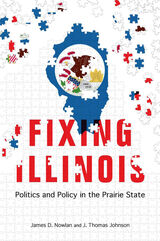 Fixing Illinois: Politics and Policy in the Prairie State
Jim Nowlan and J. Thomas Johnson
University of Illinois Press, 2014 In the 1950s, thriving commerce, strong leadership, and geographical good fortune made Illinois one of the most envied states in the nation. Today, persistent problems have left it the butt of jokes and threatened it with fiscal catastrophe. In Fixing Illinois, James D. Nowlan and J. Thomas Johnson use their four decades of experience as public servants, Springfield veterans, and government observers to present a comprehensive program of almost one hundred specific policy ideas aimed at rescuing the state from its long list of problems, including: - An overhaul of state pension systems that includes more reasonable benefits and raising of the retirement age, among other changes;
- Broadening of the tax base to include services and reductions in rates;
- Raising funds with capital construction bonds to update and integrate the antiquated information systems used by state agencies;
- Uprooting the state's entrenched culture of corruption via public financing of elections, redistricting reform, and revolving door prohibitions for lawmakers
Pointed, honest, and pragmatic, Fixing Illinois is a plan for effective and honest government that seeks an even nobler end: restoring our faith in Illinois's institutions and reviving a sense of citizenship and state pride.
 Fixing Medical Prices: How Physicians Are Paid
Miriam J. Laugesen
Harvard University Press, 2016 Medical care prices in the United States are not only the most expensive in the world, but there are wide variations in what physicians are paid. Doctors at the frontlines of medical care who manage complex conditions argue that they receive disproportionately lower fees than physicians performing services such as minor surgeries and endoscopies. Fixing Medical Prices goes to the heart of the U.S. medical pricing process: to a largely unknown yet influential committee of medical organizations affiliated with the American Medical Association that advises Medicare. Medicare’s ready acceptance of this committee’s recommendations typically sets off a chain reaction across the entire American health care system.
For decades, the U.S. policymaking structure for pricing has reflected the influence of physician organizations. What Miriam Laugesen’s rich analysis shows is how these organizations navigate the arcane and complex work of this advisory committee. Contradicting the story of a profession in political decline, Fixing Medical Prices demonstrates that the power of physician organizations has simply become more subtle.
Laugesen’s investigation into the exorbitant cost of American medical care will be of interest to those who follow the politics of health care policy, the influence of interest groups on rate setting, and the medical profession’s past and future role in our health care system.
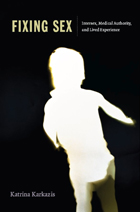 Fixing Sex: Intersex, Medical Authority, and Lived Experience
Katrina Karkazis
Duke University Press, 2008 What happens when a baby is born with “ambiguous” genitalia or a combination of “male” and “female” body parts? Clinicians and parents in these situations are confronted with complicated questions such as whether a girl can have XY chromosomes, or whether some penises are “too small” for a male sex assignment. Since the 1950s, standard treatment has involved determining a sex for these infants and performing surgery to normalize the infant’s genitalia. Over the past decade intersex advocates have mounted unprecedented challenges to treatment, offering alternative perspectives about the meaning and appropriate medical response to intersexuality and driving the field of those who treat intersex conditions into a deep crisis. Katrina Karkazis offers a nuanced, compassionate picture of these charged issues in Fixing Sex, the first book to examine contemporary controversies over the medical management of intersexuality in the United States from the multiple perspectives of those most intimately involved. Drawing extensively on interviews with adults with intersex conditions, parents, and physicians, Karkazis moves beyond the heated rhetoric to reveal the complex reality of how intersexuality is understood, treated, and experienced today. As she unravels the historical, technological, social, and political forces that have culminated in debates surrounding intersexuality, Karkazis exposes the contentious disagreements among theorists, physicians, intersex adults, activists, and parents—and all that those debates imply about gender and the changing landscape of intersex management. She argues that by viewing intersexuality exclusively through a narrow medical lens we avoid much more difficult questions. Do gender atypical bodies require treatment? Should physicians intervene to control the “sex” of the body? As this illuminating book reveals, debates over treatment for intersexuality force reassessment of the seemingly natural connections between gender, biology, and the body.
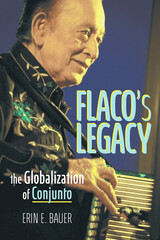 Flaco’s Legacy: The Globalization of Conjunto
Erin E. Bauer
University of Illinois Press, 2023 A combination of button accordion and bajo sexto, conjunto originated in the Texas-Mexico borderlands as a popular dance music and became a powerful form of regional identity. Today, listeners and musicians around the world have embraced the genre and the work of conjunto masters like Flaco Jiménez and Mingo Saldívar. Erin E. Bauer follows conjunto from its local origins through three processes of globalization--migration via media, hybridization, and appropriation--that boosted the music’s reach. As Bauer shows, conjunto’s encounter with globalizing forces raises fundamental questions. What is conjunto stylistically and socioculturally? Does context change how we categorize it? Do we consider the music to be conjunto based on its musical characteristics or due to its performance by Jiménez and other regional players? How do similar local genres like Tejano and norteño relate to ideas of categorization? A rare look at a fascinating musical phenomenon, Flaco’s Legacy reveals how conjunto came to encompass new people, places, and styles.
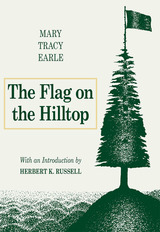 The Flag on the Hilltop
Mary Tracy Earle
Southern Illinois University Press, 1989 Early in the Civil War, two young brothers boldly flew the Union flag from a tree atop a hill between Makanda and Cobden. This was a towering act of courage in an area teeming with Copperheads. Theodore and Al Thompson, 18 and 20 years old at the time, raised the flag in defiance of the Knights of the Golden Circle, a secessionist group that operated throughout the Midwest. Controlling its membership through terror, this secret society condemned betrayers to death by torture. The Knights, whose goals included capturing a Union prison and liberating the rebels, triggered the Civil War riot in Charleston, instigated anti-draft movements, and aided Northern deserters. Theodore Thompson, who later owned much of Makanda, Giant City, and the land that became Southern Illinois University describes the tree as a "tall tulip poplar between 3 and 4 feet in diameter at the trunk and some 60 feet to the first limbs. This noted tree could be seen in some directions 15 or 20 miles away."
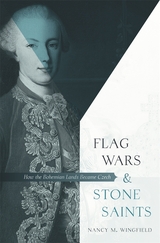 Flag Wars and Stone Saints: How the Bohemian Lands Became Czech
Nancy M. Wingfield
Harvard University Press, 2007 In a new perspective on the formation of national identity in Central Europe, Nancy Wingfield analyzes what many historians have treated separately--the construction of the Czech and German nations--as a larger single phenomenon.
Czech and German nationalism worked off each other in dynamic ways. As external conditions changed, Czech and German nationalists found new uses for their pasts and new ways to stage them in public spaces for their ongoing national projects. These grassroots confrontations transformed public culture by reinforcing the centrality of nationality to everyday life and by tying nationalism to the exercise of power. The battles in the public sphere produced a cultural geography of national conflict associated with the unveiling of Joseph II statues that began in 1881, the Badeni Language Ordinances of 1897, the 1905 debate over a Czech-language university in Moravia, and the celebration of the emperor's sixtieth jubilee in 1908. The pattern of impassioned national conflict would be repeated for the duration of the monarchy and persist with even more violence into the First Czechoslovak Republic.
Numerous illustrations show how people absorbed, on many levels, visual clues that shaped how they identified themselves and their groups. This nuanced analysis is a valuable contribution to our understanding of Central European history, nationalism, and the uses of collective memory.
Flagellant Confraternities and Italian Art, 1260-1610: Ritual and Experience
Andrew H. Chen
Amsterdam University Press, 2018 This book examines the art and ritual of flagellant confraternities in Italy from the fourteenth to the seventeenth centuries. Meeting regularly to beat themselves with whips, members of these confraternities concentrated on the suffering of Christ in the most extreme and committed way, and the images around them provided visual prompts of the Passion and the model suffering body. This study presents new findings related to a variety of artworks including altarpieces, banners, wall paintings, illuminated manuscripts, and paintings for the condemned, many from outside the Florence-Rome-Venice triangle.
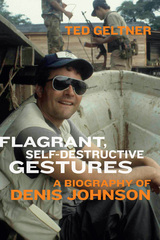 Flagrant, Self-Destructive Gestures: A Biography of Denis Johnson
Ted Geltner
University of Iowa Press, 2025 The year was 1988, and Denis Johnson was at a low point. He caught malaria on a reporting trip into the jungles of the Philippines and was nearly pronounced dead. The disease left him unable to write. His second wife left him. He didn’t have enough money to pay his taxes. His publisher was waiting for a book that he hadn’t started. But in the life of Denis Johnson, when things were at their bleakest, something good was usually waiting around the next corner. This time, what emerged from the chaos was his masterpiece Jesus’ Son, a book that would tap into the zeitgeist of the 1990s and become a bible for Generation X and an American classic. Flagrant, Self-Destructive Gestures tells the complete story of Johnson’s fascinating life, his thrill-seeking trips into war zones as a magazine correspondent, his battles with addiction, his live-it-before-you-write-it style of fiction. It follows the arc of his tremendous body of work as a novelist, journalist, poet, and playwright, and in the process recovers the true stories from the hazy myths that one of our most beloved, yet enigmatic, writers left behind.
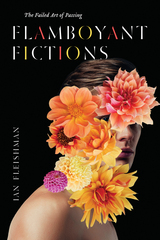 Flamboyant Fictions: The Failed Art of Passing
Ian Fleishman
Northwestern University Press, 2025 Exposes a stylistic tradition of flamboyantly failed passing in queer literature and film This book posits formal experimentation as an index for evolving expressions of male homosexuality from literary modernism to the German New Wave and the present day. Ian Fleishman exposes a tradition of flamingly failed passing that is itself a surreptitious mode of passing: the flaunting of queer style as an intentionally unconvincing cover for queer content. Exploring a corpus of films and novels by André Gide, Jean Genet, Rainer Werner Fassbinder, Werner Schroeter, François Ozon, and Xavier Dolan, among others, Flamboyant Fictions: The Failed Art of Passing intervenes in trenchant debates about queer agency, visibility, negativity, and disidentification. Mapping queer strategies of storytelling onto queer practices of self-invention, Flamboyant Fictions wagers that it is precisely in instances of conflict between these auteurs and their inventions that narrative becomes a laboratory for testing the sovereignty and self-determination of queer identity.
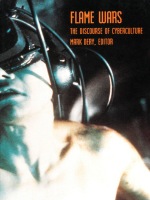 Flame Wars: The Discourse of Cyberculture
Mark Dery
Duke University Press, 1994 "Flame Wars," the verbal firefights that take place between disembodied combatants on electronic bulletin boards, remind us that our interaction with the world is increasingly mediated by computers. Bit by digital bit we are being "Borged," as devotees of Star Trek: The Next Generation would have it—transformed into cyborgian hybrids of technology and biology through our ever more frequent interaction with machines, or with one another through technological interfaces. The subcultural practices of the "incurably informed," to borrow the cyberpunk novelist Pat Cadigan’s coinage, offer a precognitive glimpse of mainstream culture in the near future, when many of us will be part-time residents in virtual communities. Yet, as the essays in this expanded edition of a special issue of the South Atlantic Quarterly confirm, there is more to fringe computer culture than cyberspace. Within these pages, readers will encounter flame warriors; new age mutant ninja hackers; technopagans for whom the computer is an occult engine; and William Gibson’s "Agrippa," a short story on software that can only be read once because it gobbles itself up as soon as the last page is reached. Here, too, is Lady El, an African American cleaning woman reincarnated as an all-powerful cyborg; devotees of on-line swinging, or "compu-sex"; the teleoperated weaponry and amok robots of the mechanical performance art group, Survival Research Laboratories; an interview with Samuel Delany, and more. Rallying around Fredric Jameson’s call for a cognitive cartography that "seeks to endow the individual subject with some new heightened sense of place in the global system," the contributors to Flame Wars have sketched a corner of that map, an outline for a wiring diagram of a terminally wired world. Contributors. Anne Balsamo, Gareth Branwyn, Scott Bukatman, Pat Cadigan, Gary Chapman, Erik Davis, Manuel De Landa, Mark Dery, Julian Dibbell, Marc Laidlaw, Mark Pauline, Peter Schwenger, Vivian Sobchack, Claudia Springer
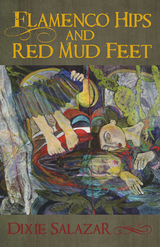 Flamenco Hips and Red Mud Feet
Dixie Salazar
University of Arizona Press, 2010 “Duality” is at the center of Flamenco Hips and Red Mud Feet, a striking collection of poems both intimate and grand. The poet, Dixie Salazar, has spent a lifetime forging her own identity out of two cultures: “On one side was my father’s world: Spanish speaking from las montañas. On the other side was my mother’s world: a deep Southern drawl wafting from the magnolia and chinaberry trees.” As her poems reveal, she is a product of both cultures but not completely at home in either one.
In the two sections of the book—“Inside” and “Outside”—parallelism and symmetry interact with themes both public and private. Flamenco Hips and Red Mud Feet presents thirty-nine poems in free verse and traditional poetic forms, especially the sonnet and adaptations of the sonnet. The sonnet—usually consisting of the octet (eight lines) that sets up the main idea of the poem and the sestet (six lines) that resolves, answers or completes the poem—is a natural form for a poet whose identity is divided. Double sonnets and “double-linked sonnets doubled” reflect the duality the poet feels inside her skin. And the poems written to and for a “lost sister” reinforce the theme.
Throughout this provocative book, Salazar navigates the alienation of her cultural in-between-ness. By the end, she appears to become more comfortable with her status of “outsider,” deciding that she doesn’t need to give in to pressures to pick a side or to accept others’ ideas of where her own “borders” begin or end.
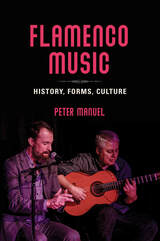 Flamenco Music: History, Forms, Culture
Peter Manuel
University of Illinois Press, 2023 An expert explains and analyzes the beloved art form An iconic symbol of Spain, flamenco has become a global phenomenon. Peter Manuel offers English-language readers a rare portrait of the music’s history, styles, and cultural impact. Beginning with flamenco’s Moorish and Roma influences, Manuel follows the music’s evolution through its consolidation in the mid-1800s and on to the vibrant contemporary scene. An investigation of flamenco’s major song-types looks at rhythm and compás, guitar technique, and many other aspects of the music while Manuel’s description and analysis of the repertoire range from soleares and bulerías to tangos. His overview of contemporary flamenco culture provides insight into issues that surround the music, including globalization, gender dynamics, notions of ownership, and the ongoing debates on purity versus innovation and the relative roles played by Gitanos and non-Gitanos. Multifaceted and entertaining, Flamenco Music is an in-depth study of the indelible art form that inspires enthusiasts and practitioners around the world.
Flamenco Nation: The Construction of Spanish National Identity
Sandie Holguín
University of Wisconsin Press, 2019 How did flamenco—a song and dance form associated with both a despised ethnic minority in Spain and a region frequently derided by Spaniards—become so inexorably tied to the country’s culture? Sandie Holguín focuses on the history of the form and how reactions to the performances transformed from disgust to reverance over the course of two centuries.
Holguín brings forth an important interplay between regional nationalists and image makers actively involved in building a tourist industry. Soon they realized flamenco performances could be turned into a folkloric attraction that could stimulate the economy. Tourists and Spaniards alike began to cultivate flamenco as a representation of the country's national identity. This study reveals not only how Spain designed and promoted its own symbol but also how this cultural form took on a life of its own.
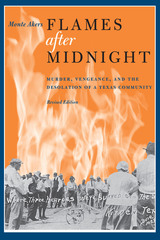 Flames after Midnight: Murder, Vengeance, and the Desolation of a Texas Community, Revised Edition
By Monte Akers
University of Texas Press, 2011 What happened in Kirven, Texas, in May 1922, has been forgotten by the outside world. It was a coworker's whispered words, "Kirven is where they burned the [Negroes]," that set Monte Akers to work at discovering the true story behind a young white woman's brutal murder and the burning alive of three black men who were almost certainly innocent of it. This was followed by a month-long reign of terror as white men killed blacks while local authorities concealed the real identity of the white probable murderers and allowed them to go free. Writing nonfiction with the skill of a novelist, Akers paints a vivid portrait of a community desolated by race hatred and its own refusal to face hard truths. He sets this tragedy within the story of a region prospering from an oil boom but plagued by lawlessness, and traces the lynching's repercussions down the decades to the present day. In the new epilogue, Akers adds details that have come to light as a result of the book's publication, including an eyewitness account of the burnings from an elderly man who claimed to have castrated two of the men before they were lynched.
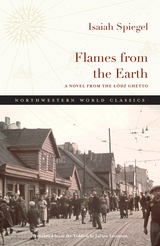 Flames from the Earth: A Novel from the Lódz Ghetto
Isaiah Spiegel, translated from the Yiddish by Julian Levinson
Northwestern University Press, 2023 An emotionally powerful, poetic Yiddish novel, available in English for the first time, that expands our understanding of Holocaust literature and testimony
Flames from the Earth: A Novel from the Łódź Ghetto is an autobiographical novel written by Isaiah Spiegel, one of the most revered Yiddish authors to survive the Holocaust. Originally published in Israel in 1966, the novel brings together material that Spiegel wrote while imprisoned in the Łódź Ghetto, which he recovered from a cellar when he returned from Auschwitz after the war. The only works by Spiegel previously available to English readers have been short stories.
In this, his first novel, Spiegel explores a complex web of characters in and around the Łódź Ghetto: Vigdor and Gitele, lovers who are involved in the ghetto resistance movement; Nicodem, a Polish priest, who hides a member of the Jewish underground; Stefan Kaczmarek, a Polish tavern keeper who betrays Nicodem to preserve his own smuggling business; Franz Jessike, a Nazi guard who blackmails local Poles for personal gain; and Chaim Vidaver, the heroic leader of the ghetto resistance. Based largely on historical events, the novel’s lyrical style echoes its emotional intensity.
Gripping and atmospheric, Flames from the Earth honors daring acts of heroism and human connections forged amid unthinkable conditions. Spiegel’s novel represents an important contribution to the archive of literary depictions of historical trauma.
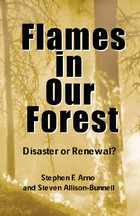 Flames in Our Forest: Disaster Or Renewal?
Stephen F. Arno and Stephen Allison-Bunnell
Island Press, 2002 Shaped by fire for thousands of years, the forests of the western United States are as adapted to periodic fires as they are to the region's soils and climate. Our widespread practice of ignoring the vital role of fire is costly in both ecological and economic terms, with consequences including the decline of important fire-dependent tree and undergrowth species, increasing density and stagnation of forests, epidemics of insects and diseases, and the high potential for severe wildfires. Flames in Our Forest explains those problems and presents viable solutions to them. It explores the underlying historical and ecological reasons for the problems associated with our attempts to exclude fire and examines how some of the benefits of natural fire can be restored Chapters consider: - the history of American perceptions and uses of fire in the forest
- how forest fires burn
- effects of fire on the soil, water, and air
- methods for uncovering the history and effects of past fires
- prescribed fire and fuel treatments for different zones in the landscape
Flames in Our Forest presents a new picture of the role of fire in maintaining forests, describes the options available for restoring the historical effects of fires, and considers the implications of not doing so. It will help readers appreciate the importance of fire in forests and gives a nontechnical overview of the scientific knowledge and tools available for sustaining western forests by mimicking and restoring the effects of natural fire regimes.
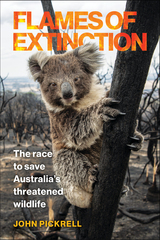 Flames of Extinction: The Race to Save Australia's Threatened Wildlife
John Pickrell
Island Press, 2021 In the early months of 2020, the world’s attention was riveted on Australia, where the nation’s iconic wildlife fought for survival in the face of unprecedented wildfires. Images of koalas drinking from firefighters’ water bottles went viral and became the global face of a catastrophe that would kill as many as three billion animals. Known as the Black Summer, the fire season was responsible for more wildlife deaths and near-extinctions than any other single event in Australian history. Flames of Extinction, written by a journalist at the heart of this news coverage, is the first book to tell the stories of Australia’s record-setting fires, focusing on the wild animals and plants that will be forever changed.
As news of the fires spread around the world, journalist John Pickrell was inundated with requests for articles about the danger to Australia’s wildlife. The picture seemed grim, from charred koalas to flames that burned so hot not even animal skeletons remained. But Pickrell’s reporting exposed a larger picture of hope. Flames of Extinction tells the story of the scientists, wildlife rehabilitators, and community members who came together to save wildlife and protect them in the future.
As climate change intensifies and devastating wildfires become more commonplace, Australia’s Black Summer offers a poignant warning to the rest of the world. Through evocative and urgent storytelling, Flames of Extinction puts readers on the ground to witness the aftermath of one of Australia’s greatest tragedies and inside the inspiring effort to save lives.
 Flammable Cities: Urban Conflagration and the Making of the Modern World
Greg Bankoff
University of Wisconsin Press, 2012 In most cities today, fire has been reduced to a sporadic and isolated threat. But throughout history the constant risk of fire has left a deep and lasting imprint on almost every dimension of urban society. This volume, the first truly global study of urban conflagration, shows how fire has shaped cities throughout the modern world, from Europe to the imperial colonies, major trade entrepôts, and non-European capitals, right up to such present-day megacities as Lagos and Jakarta. Urban fire may hinder commerce or even spur it; it may break down or reinforce barriers of race, class, and ethnicity; it may serve as a pretext for state violence or provide an opportunity for displays of state benevolence. As this volume demonstrates, the many and varied attempts to master, marginalize, or manipulate fire can turn a natural and human hazard into a highly useful social and political tool.
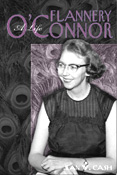 Flannery O Connor: A Life
Jean W. Cash
University of Tennessee Press, 2002 Flannery O’Connor (1925–1964) ranks among the foremost writers of fiction in American literature. Her short stories, in particular, are considered models of the form. Born in Savannah, O’Connor spent most of her life in Georgia and infused her work with southern characters, themes, and landscapes. A devout Catholic, she addressed the mystery of God’s grace in everyday life, often amid the grotesque, the shocking, and the violent. In this first full-length biography of the writer, Jean W. Cash draws upon extensive interviews with O’Connor’s friends, relatives, teachers, and colleagues as well as on the writer’s voluminous correspondence to provide a sensitive, balanced portrait of a fascinating woman.
As Cash demonstrates, O’Connor’s sheltered childhood, extraordinary intellect, spiritual certainty, and unique personality—including a wry sense of humor—combined not only to make her something of an outsider but also to foster her literary genius. As a child, her favorite activities were reading, writing stories, and drawing. Perhaps more unusual was her childhood feat of teaching a rooster to walk backwards. Her passion for exotic fowl later found expression in the peacock symbolism in her fiction.
The family moved to Milledgeville, Georgia, in 1938, and there O’Connor attended high school and college. She left the South in 1945 and entered the graduate writing program at the University of Iowa, where she completed several chapters of her first novel, Wise Blood. She went on to live at the Yaddo writers’ colony in Saratoga Springs, New York, and she might have spent her most creative years in the North if illness had not interfered. However, lupus—the same disease that had killed her father—forced her to return to Milledgeville, where she lived and wrote for the remaining fourteen years of her life under the protective care of her mother.
The latter chapters of Cash’s biography address O’Connor’s adjustment to her debilitating illness and to a more circumscribed existence. As Cash explains, she learned to accommodate her mother’s insular outlook, and in many ways her fiction profited artistically during this period. Her friendships and active correspondence added to the variety and vitality of her life. She also traveled widely on the lecture circuit and reviewed books for a local Catholic publication. Even in her illness and relative isolation in Milledgeville, O’Connor continued to live a richly rewarding and creative life.
The Author: Jean W. Cash is professor of English at James Madison University.
 Flannery O'Connor and Blaise Pascal: Recovering the Incarnation for the Modern Mind
Ann Hartle
Catholic University of America Press, 2025 Flannery O’Connor is a guide for the Catholic who seeks to gain a deeper understanding of what it means to live the life of faith in the modern world. O’Connor describes herself as a Catholic burdened by the modern consciousness which the psychologist Carl Gustav Jung views as “unhistorical, solitary, and guilty.” Ann Hartle understands O’Connor’s fiction as her confrontation with this specifically modern form of consciousness. The seventeenth-century philosopher Blaise Pascal helps us to experience the meaning of O’Connor’s fiction because Pascal confronted that same consciousness in its origins in Montaigne’s philosophy. O’Connor recognizes in Pascal a truly Catholic modern philosopher who speaks to the experience of the searching mind of modern man.
Flannery O'Connor and Blaise Pascal approaches O’Connor’s fiction from a philosophical perspective rather than the perspective of a literary critic. The goal of this volume is to deepen the experience of the meaning of her stories insofar as they are addressed to a specifically modern audience burdened with the form of consciousness that is highly skeptical of the historical reality of the Christian mystery.
Hartle's argument is that modern consciousness rests on the “spiritualization” of the Incarnation. Both Montaigne and Jung abstract a purely human meaning from the historical embodied reality of the Incarnation and place that meaning in the service of modern man’s attempt at self-creation and self-redemption. O’Connor presents us with an especially vivid picture of Jung’s truly modern individual in Hazel Motes, Hulga Hopewell, George Rayber, and The Misfit. In her comic art, O’Connor brings out the possibility of grace against the background of the pervasive psychological attitude toward human conduct. She shows us how the modern distortions of the human personality can be addressed in a specifically Catholic way, that is, through the meaning of the Catholic sacramental view of life and the Catholic principle of mutual interdependence.
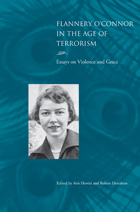 Flannery O'Connor in the Age of Terrorism: Essays on Violence and Grace
Avis Hewitt and Robert Donahoo
University of Tennessee Press, 2010
In any age, humans wrestle with apparently inexorable forces. Today, we face the threat of global terrorism. In the aftermath of September 11, few could miss sensing that a great evil was at work in the world. In Flannery O’Connor’s time, the threats came from different sources—World War II, the Cold War, and the Korean conflict—but they were just as real. She, too, lived though a “time of terror.” The first major critical volume on Flannery O’Connor’s work in more than a decade, Flannery O’Connor in the Age of Terrorism explores issues of violence, evil, and terror—themes that were never far from O’Connor’s reach and that seem particularly relevant to our present-day setting.
The fifteen essays collected here offer a wide range of perspectives that explore our changing views of violence in a post-9/11 world and inform our understanding of a writer whose fiction abounds in violence. Written by both established and emerging scholars, the pieces that editors Avis Hewitt and Robert Donahoo have selected offer a compelling and varied picture of this iconic author and her work. Included are comparisons of O’Connor to 1950s writers of noir literature and to the contemporary American novelist Cormac McCarthy; cultural studies that draw on horror comics of the Cold War and on Fordism and the American mythos of the automobile; and pieces that shed new light on O’Connor’s complex religious sensibility and its role in her work.
While continuing to speak fresh truths about her own time, O’Connor’s fiction also resonates deeply with the postmodern sensibilities of audiences increasingly distant from her era—readers absorbed in their own terrors and sense of looming, ineffable threats. This provocative new collection presents O’Connor’s work as a touchstone for understanding where our culture has been and where we are now. With its diverse approaches, Flannery O’Connor in the Age of Terrorism will prove useful not only to scholars and students of literature but to anyone interested in history, popular culture, theology, and reflective writing.
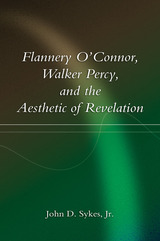 Flannery O'Connor, Walker Percy, and the Aesthetic of Revelation
John D. Sykes, Jr.
University of Missouri Press, 2007 With his mastery of modernist technique and his depictions of characters obsessed with the past, Nobel laureate William Faulkner raised the bar for southern fiction writers. But the work of two later authors shows that the aesthetic of memory is not enough: Confederate thunder fades as they turn to an explicitly religious source of meaning. According to John Sykes, the fiction of Flannery O’Connor and Walker Percy provides occasions for divine revelation. He traces their work from its common roots in midcentury southern and Catholic intellectual life to show how the two adopted different theological emphases and rhetorical strategies—O’Connor building to climactic images, Percy striving for dialogue with the reader—as a means of uncovering the sacramental foundation of the created order. Sykes sets O’Connor and Percy against the background of the Southern Renaissance from which they emerged, showing not only how they shared a distinctly Christian notion of art that led them to see fiction as revelatory but also how their methods of revelation took them in different directions. Yet, despite their differences in strategy and emphasis, he argues that the two are united in their conception of the artist as “God’s sharp-eyed witness,” and he connects them with the philosophers and critics, both Christian and non-Christian, who had a meaningful influence on their work. Through sustained readings of key texts—particularly such O’Connor stories as “The Artificial Nigger” and “The Geranium” and Percy’s novels Love in the Ruins and The Second Coming—Sykes focuses on the intertwined themes of revelation, sacrament, and community. He views their work in relation to the theological difficulties that they were not able to overcome concerning community. For both writers, the question of community is further complicated by the changing nature of the South as the Lost Cause and segregation lose their holds and a new form of prosperity arises. By disclosing how O’Connor and Percy made aesthetic choices based on their Catholicism and their belief that fiction by its very nature is revelatory, Sykes demonstrates that their work cannot be seen as merely a continuation of the historical aesthetic that dominated southern literature for so long. Flannery O’Connor, Walker Percy, and the Aesthetic of Revelation is theoretically sophisticated without being esoteric and is accessible to any reader with a serious interest in these writers, brimming with fresh insights about both that clarify their approaches to art and enrich our understanding of their work.
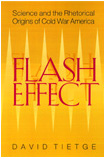 Flash Effect: Science and the Rhetorical Origins of Cold War America
David J. Tietge
Ohio University Press, 2002 The ways science and technology are portrayed in advertising, in the news, in our politics, and in the culture at large inform the way we respond to these particular facts of life. The better we are at recognizing the rhetorical intentions of the purveyors of information and promoters of mass culture, the more adept we become at responding intelligently to them. Flash Effect, a startling book by David J. Tietge, documents the manner in which those at the highest levels of our political and cultural institutions conflated the rhetoric of science and technology with the rhetorics of religion and patriotism to express their policies for governance at the onset of the Cold War and to explain them to the American public. Professor Tietge details our cultural attitudes about science in the early years of the Cold War, when on the heels of a great technological victory Americans were faced with the possibility of destruction by the very weapons that had saved them. In Flash Effect we learn how, by symbolizing the scientist as both a father figure and a savior—and by celebrating the technological objects of his labor—the campaign to promote science took hold in the American consciousness. The products of that attitude are with us today more than ever.
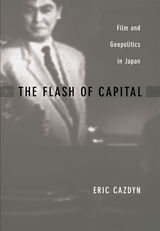 The Flash of Capital: Film and Geopolitics in Japan
Eric Cazdyn
Duke University Press, 2002 The Flash of Capital analyzes the links between Japan’s capitalist history and its film history, illuminating what these connections reveal about film culture and everyday life in Japan. Looking at a hundred-year history of film and capitalism, Eric Cazdyn theorizes a cultural history that highlights the spaces where film and the nation transcend their customary borders—where culture and capital crisscross—and, in doing so, develops a new way of understanding historical change and transformation in modern Japan and beyond.
Cazdyn focuses on three key moments of historical contradiction: colonialism, post-war reconstruction, and globalization. Considering great classics of Japanese film, documentaries, works of science fiction, animation, and pornography, he brings to light cinematic attempts to come to terms with the tensions inherent in each historical moment—tensions between the colonizer and the colonized, between the individual and the collective, and between the national and the transnational. Paying close attention to political context, Cazdyn shows how formal inventions in the realms of acting, film history and theory, thematics, documentary filmmaking, and adaptation articulate a struggle to solve implacable historical problems. This innovative work of cultural history and criticism offers explanations of historical change that challenge conventional distinctions between the aesthetic and the geopolitical.
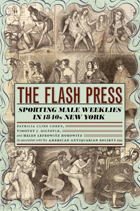 The Flash Press: Sporting Male Weeklies in 1840s New York
Patricia Cline Cohen, Timothy J. Gilfoyle, Helen Lefkowitz Horowitz, in association with the American Antiquarian Society
University of Chicago Press, 2008 Obscene, libidinous, loathsome, lascivious. Those were just some of the ways critics described the nineteenth-century weeklies that covered and publicized New York City’s extensive sexual underworld. Publications like the Flash and the Whip—distinguished by a captivating brew of lowbrow humor and titillating gossip about prostitutes, theater denizens, and sporting events—were not the sort generally bound in leather for future reference, and despite their popularity with an enthusiastic readership, they quickly receded into almost complete obscurity. Recently, though, two sizable collections of these papers have resurfaced, and in The Flash Press three renowned scholars provide a landmark study of their significance as well as a wide selection of their ribald articles and illustrations. Including short tales of urban life, editorials on prostitution, and moralizing rants against homosexuality, these selections epitomize a distinct form of urban journalism. Here, in addition to providing a thorough overview of this colorful reportage, its editors, and its audience, the authors examine nineteenth-century ideas of sexuality and freedom that mixed Tom Paine’s republicanism with elements of the Marquis de Sade’s sexual ideology. They also trace the evolution of censorship and obscenity law, showing how a string of legal battles ultimately led to the demise of the flash papers: editors were hauled into court, sentenced to jail for criminal obscenity and libel, and eventually pushed out of business. But not before they forever changed the debate over public sexuality and freedom of expression in America’s most important city.
 Flashfire: A Parker Novel
Richard Stark
University of Chicago Press, 2011 An action-packed crime novel starring Parker, the heister starring in the forthcoming Shane Black film Play Dirty!
Richard Stark's Parker novels are the hardest of hard-boiled, classic crime novels where the heists are huge, the body counts are high, and the bad guys usually win.
The Parker novels have been a huge influence on countless writers and filmmakers, including Quentin Tarantino, Stephen King, George Pelecanos, Colson Whitehead, Lucy Sante, John Banville, and many more. Their stripped-down language and hard-as-nails amorality create an unforgettable world where the next score could be the big one, but your next mistake could also be your last. There's nothing else like them.
Between Parker’s 1961 debut and his return in the late 1990s, the whole world of crime changed. Now fake IDs and credit cards had to be purchased from specialists; increasingly sophisticated policing made escape and evasion tougher; and, worst of all, money had gone digital—the days of cash-stuffed payroll trucks were long gone.
But cash isn’t everything: Flashfire (which was the basis of the Jason Statham and Jennifer Lopez film Parker) finds Parker going after a fortune in jewels in West Palm Beach. He's unexpectedly competing with a crew that has an unhealthy love of explosions, and when things go sour, Parker finds himself shot and trapped—and forced to rely on a civilian to survive.
The Flat Woman: A Novel
Vanessa Saunders
University of Alabama Press, 2025 Asks who gets the right to call themselves a good person in a morally bankrupt world
In The Flat Woman, women exclusively are blamed for the climate crisis. Seagulls drop dead from the sky, and the government, instead of taking responsibility, scapegoats a group of female ecoterrorists. When a girl’s mother is incarcerated for climate crimes, she is forced to raise herself alone. As a young woman, she begins a romance with an environmental activist whose passion makes her question her own role in the world. By turns hilarious, deadly serious, and completely absurd, The Flat Woman asks who gets the right to call themselves a good person in a world ripe with disaster. Driven by complex academic and moral questions, The Flat Woman is certain to appeal to fans of feminist and experimental literature, as well as fans of Margaret Atwood, Renee Gladman, Bhanu Kapil, Maggie Nelson, Kelly Link, and Anne Carson.
Flatfish: Poems, A Bilingual Edition
Moon Tae-jun
Rutgers University Press, 2026 In his poetry collection, Flatfish, Moon Tae-jun offers an aesthetic that emphasizes the author’s exploration of the inner self. At times sparse and allusive, his poems use blank space and other stylistic considerations to convey a voice and thought that ranges from the contemplative to the surreal and absurd. Moon’s poems suggest Buddhist ideologies, natural images, and Korean temples, as the collection explores individual experiences within the context of a search for understanding a greater whole. While Korea is certainly the setting of these poems, the works remain largely free of cultural-specific imagery and are, instead, naturalistic or universal. This first bilingual edition is a critical resource for students, poets, translators, and general readers alike.
English-Korean Bilingual Edition
영-한 이중언어판
Flatlanders and Ridgerunners: Folktales from the Mountains of Northern Pennsylvania
James York Glimm
University of Pittsburgh Press, 1983
Excerpt from Flatlanders and Ridgerunners:
Out-Riddling the Judge
Back in Prohibition my uncle made moonshine. His name was Moses Kenny and his whiskey--they called it “White Mule” was the best in the county. Well, the feds got after him and finally they arrested him. Took him to a federal judge down in Philadelphia.
Now, the judge liked a good time and thought he’d have a little fun with this hick from the mountains. When Uncle came into court, he said, “are you the Moses who can make the sun dark?”
Moses looked at him and said slowly, “Nope, your honor. But I am the Moses who can make the moon shine.”
The judge let him go.
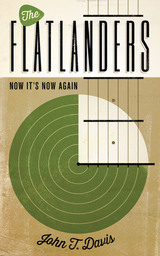 The Flatlanders: Now It's Now Again
By John T. Davis
University of Texas Press, 2014 A group of three friends who made music in a house in Lubbock, Texas, recorded an album that wasn’t released and went their separate ways into solo careers. That group became a legend and then—twenty years later—a band. The Flatlanders—Joe Ely, Jimmie Dale Gilmore, and Butch Hancock—are icons in American music, with songs blending country, folk, and rock that have influenced a long list of performers, including Robert Earl Keen, the Cowboy Junkies, Ryan Bingham, Terry Allen, John Hiatt, Hayes Carll, Lucinda Williams, Steve Earle, and Lyle Lovett. In The Flatlanders: Now It’s Now Again, Austin author and music journalist John T. Davis traces the band’s musical journey from the house on 14th Street in Lubbock to their 2013 sold-out concert at Carnegie Hall. He explores why music was, and is, so important in Lubbock and how earlier West Texas musicians such as Buddy Holly and Roy Orbison, as well as a touring Elvis Presley, inspired the young Ely, Gilmore, and Hancock. Davis vividly recreates the Lubbock countercultural scene that brought the Flatlanders together and recounts their first year (1972–1973) as a band, during which they recorded the songs that, decades later, were released as the albums More a Legend Than a Band and The Odessa Tapes. He follows the three musicians through their solo careers and into their first decade as a (re)united band, in which they cowrote songs for the first time on the albums Now Again and Hills and Valleys and recovered their extraordinary original demo tape, lost for forty years. Many roads later, the Flatlanders are finally both a legend and a band.
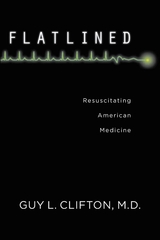 Flatlined: Resuscitating American Medicine
Clifton, Guy L
Rutgers University Press, 2008 Flatlined lifts the veil of secrecy on twenty-first century health care and delves into the realities of good people caught in a bad medical system. Dr. Guy L. Clifton, a practitioner as well as a policy advocate, reveals first-hand accounts of needless tragedy, such as the young man who died after a car wreck for lack of a bed in a qualified hospital and the surgeon who was dejected by the scarcity of resources needed to enable him to perform heart surgery on an uninsured man.
Arguing that a lack of coordinated care and quality medical practice benchmarks result in high levels of redundancy and ineffectiveness, Clifton proposes that the key to reducing health care costs, improving quality, and financially protecting the uninsured, is to reduce wastefulness, and offers a solution for achieving success. Flatlined sounds the warning call: By 2018 Medicare and Medicaid will consume about one-third of the federal budget. American businesses now pay three times as much of their payroll for health care as global competitors, expected to worsen as health care grows at twice the rate of the U.S. economy. Based on his years of experience in policy and medicine, Clifton offers an attainable solution through the development of an American Medical Quality System.
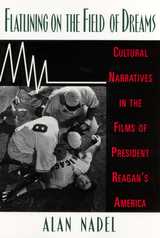 Flatlining on the Field of Dreams: Cultural Narratives in the Films of President Reagan's America
Nadel, Alan
Rutgers University Press, 1997 "Flatlining on the Field of Dreams takes a apart some of the most commercially successful films of the epoch, demonstrating how they reflected, debated, and played with the dominant ideology of the time. . . . cleverly and wittily written . . . . The book will work extremely well in the classroom."
-Film Quarterly
"From Back to the Future to Forrest Gump, Nadel shows not only how notions of cinematic time re-script political change but how our very conceptualizations of change are thematized by our experiences of watching movies. This is not simply film history, or film as history, but film affirming "history" in the same way that Ronald Reagan affirmed film narratives."
-Susan Jeffords, University of Washington
"Flatlining on the Field of Dreams brilliantly restages the cultural narratives associated with Reaganism within a neo-imperialist cinematic space and reveals the heretofore unexamined role class played in the reproduction of those narratives."
-Donald E. Pease, Dartmouth College
Flatlining on the Field of Dreams demonstrates, with witty prose and careful analysis, how the overindulgent, image-conscious years of the Reagan administration are reflected in sundry aspects of American films produced during that era. Discussing dozens of films, including Home Alone, Beetlejuice, Ghost, The Little Mermaid, Working Girl, Who Framed Roger Rabbit?, and Trading Places, Alan Nadel identifies narratives about credit, deregulation, gender, race, and masculinity that defined "President Reagan's America." Linking the way Hollywood films work to the stories they tell, he explains how the ideas and values of Reaganism became the symbolic food of a hyper-consumptive society. The book provides hard-to-ignore demonstrations of the extensive synergy between politics, history, and popular culture.
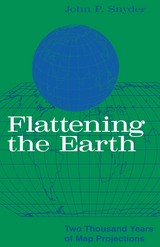 Flattening the Earth: Two Thousand Years of Map Projections
John P. Snyder
University of Chicago Press, 1997 As long as there have been maps, cartographers have grappled with the impossibility of portraying the earth in two dimensions. To solve this problem mapmakers have created hundreds of map projections, mathematical methods for drawing the round earth on a flat surface. Yet of the hundreds of existing projections, and the infinite number that are theoretically possible, none is perfectly accurate.
Flattening the Earth is the first detailed history of map projections since 1863. John P. Snyder discusses and illustrates the hundreds of known projections created from 500 B.C. to the present, emphasizing developments since the Renaissance and closing with a look at the variety of projections made possible by computers.
The book contains 170 illustrations, including outline maps from original sources and modern computerized reconstructions. Though the text is not mathematically based, a few equations are included to permit the more technical reader to plot some projections. Tables summarize the features of nearly two hundred different projections and list those used in nineteenth-and twentieth-century atlases.
"This book is unique and significant: a thorough, well-organized, and insightful history of map projections. Snyder is the world's foremost authority on the subject and a significant innovator in his own right."—Mark Monmonier, author of How to Lie with Maps and Mapping It Out: Expository Cartography for the Humanities and Social Sciences.
 Flaubert
Michel Winock
Harvard University Press, 2016 Michel Winock’s biography situates Gustave Flaubert’s life and work in France’s century of great democratic transition. Flaubert did not welcome the egalitarian society predicted by Tocqueville. Wary of the masses, he rejected the universal male suffrage hard won by the Revolution of 1848, and he was exasperated by the nascent socialism that promoted the collective to the detriment of the individual. But above all, he hated the bourgeoisie. Vulgar, ignorant, obsessed with material comforts, impervious to beauty, the French middle class embodied for Flaubert every vice of the democratic age. His loathing became a fixation—and a source of literary inspiration.
Flaubert depicts a man whose personality, habits, and thought are a stew of paradoxes. The author of Madame Bovary and Sentimental Education spent his life inseparably bound to solitude and melancholy, yet he enjoyed periodic escapes from his “hole” in Croisset to pursue a variety of pleasures: fervent friendships, society soirées, and a whirlwind of literary and romantic encounters. He prided himself on the impersonality of his writing, but he did not hesitate to use material from his own life in his fiction. Nowhere are Flaubert’s contradictions more evident than in his politics. An enemy of power who held no nostalgia for the monarchy or the church, he was nonetheless hostile to collectivist utopias.
Despite declarations of the timelessness and sacredness of Art, Flaubert could not transcend the era he abominated. Rejecting the modern world, he paradoxically became its celebrated chronicler and the most modern writer of his time.
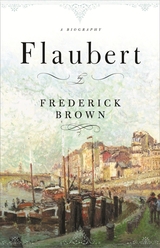 Flaubert: A Biography
Frederick Brown
Harvard University Press, 2007 Finalist, 2006 National Book Critics Circle Awards, Biography Category | A New York Times Notable Book of 2006 | A Publishers Weekly Best Book of 2006
In this riveting landmark biography, Frederick Brown illuminates the life and career of the author of Madame Bovary. He describes Flaubert’s fraught relationship with his longtime mistress Louise Colet, his liaisons with many other women, and his friendships with luminaries such as Turgenev and Zola. Here too is Brown’s description of Flaubert’s meticulous compositional habits, his painstaking search for the sentence that is deeply, rhythmically right.
Brown brings his subject remarkably and fully to life, illuminating not only the novelist but also his milieu—the Paris and Normandy of the revolution of 1848 and of the Second Empire—with arresting clarity and a deepening sense of Flaubert’s time and place. Flaubert is a sophisticated, thorough, and utterly absorbing re-creation of the life and times of the man who is arguably the architect of the modern novel.
Flaubert's Landscape Descriptions
Benjamin F. Bart
University of Michigan Press, 1956 This short book is a survey of Flaubert's landscape descriptions. It covers all Flaubert's writings, from the famous works of fiction to his lesser known travel writings, as well as private writings such as letters, notebooks, and journals. Much of the descriptive writing about landscapes in Flaubert's fiction is brief, and often symbolic: hence every detail counts in some way toward making a subtle contribution to the mood or structure of the narrative. Flaubert's private writings treat landscape more expansively, but are also clearly a kind of workshop in which he honed his technique for descriptive prose.
Flavian Responses to Nero's Rome
Mark Heerink
Amsterdam University Press, 2022 In this interdisciplinary volume, a team of classicists, historians, and archaeologists examines how the memory of the infamous emperor Nero was negotiated in different contexts and by different people during the ensuing Flavian age of imperial Rome. The contributions show different Flavian responses to Nero’s complicated legacy: while some aspects of his memory were reinforced, others were erased. Emphasizing the constant and diverse nature of this negotiation, this book proposes a nuanced interpretation of both the Flavian age itself and its relation to Nero’s Rome. By combining the study of these strategies with architectural approaches, archaeology, and memory studies, this volume offers a multifaceted picture of Roman civilization at a crucial turning point, and as such will have something to offer anyone interested in classics, (ancient) history, and archaeology.
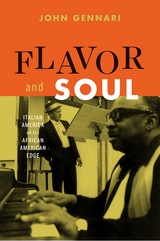 Flavor and Soul: Italian America at Its African American Edge
John Gennari
University of Chicago Press, 2017 In the United States, African American and Italian cultures have been intertwined for more than a hundred years. From as early as nineteenth-century African American opera star Thomas Bowers—“The Colored Mario”—all the way to hip-hop entrepreneur Puff Daddy dubbing himself “the Black Sinatra,” the affinity between black and Italian cultures runs deep and wide. Once you start looking, you’ll find these connections everywhere. Sinatra croons bel canto over the limousine swing of the Count Basie band. Snoop Dogg deftly tosses off the line “I’m Lucky Luciano ’bout to sing soprano.” Like the Brooklyn pizzeria and candy store in Spike Lee’s Do the Right Thing and Jungle Fever, or the basketball sidelines where Italian American coaches Rick Pitino and John Calipari mix it up with their African American players, black/Italian connections are a thing to behold—and to investigate.
In Flavor and Soul, John Gennari spotlights this affinity, calling it “the edge”—now smooth, sometimes serrated—between Italian American and African American culture. He argues that the edge is a space of mutual emulation and suspicion, a joyous cultural meeting sometimes darkened by violent collision. Through studies of music and sound, film and media, sports and foodways, Gennari shows how an Afro-Italian sensibility has nourished and vitalized American culture writ large, even as Italian Americans and African Americans have fought each other for urban space, recognition of overlapping histories of suffering and exclusion, and political and personal rispetto.
Thus, Flavor and Soul is a cultural contact zone—a piazza where people express deep feelings of joy and pleasure, wariness and distrust, amity and enmity. And it is only at such cultural edges, Gennari argues, that America can come to truly understand its racial and ethnic dynamics.
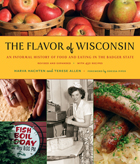 The Flavor of Wisconsin: An Informal History of Food and Eating in the Badger State
Harva Hachten
Wisconsin Historical Society Press, 2023 The Wisconsin Historical Society published Harva Hachten's The Flavor of Wisconsin in 1981. It immediately became an invaluable resource on Wisconsin foods and foodways. This updated and expanded edition explores the multitude of changes in the food culture since the 1980s. It will find new audiences while continuing to delight the book’s many fans. And it will stand as a legacy to author Harva Hachten, who was at work on the revised edition at the time of her death in April 2006.
While in many ways the first edition of The Flavor of Wisconsin has stood the test of time very well, food-related culture and business have changed immensely in the twenty-five years since its publication. Well-known regional food expert and author Terese Allen examines aspects of food, cooking, and eating that have changed or emerged since the first edition, including the explosion of farmers' markets; organic farming and sustainability; the "slow food" movement; artisanal breads, dairy, herb growers, and the like; and how relatively recent immigrants have contributed to Wisconsin's remarkably rich food scene.
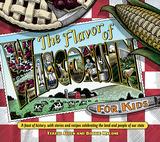 Flavor of Wisconsin for Kids: A Feast of History, with Stories and Recipes Celebrating the Land and People of Our State
Terese Allen
Wisconsin Historical Society Press, 2012 What are some food favorites in Wisconsin, and why are they special to us? How have our landscape and the people who have inhabited it contributed to our food heritage? This unique blend of history book and cookbook gives kids a real taste for hands-on history by showing them how to create and sample foods that link us to the resources found in our state and the heritage of those who produce them. Designed for kids and adults to use together, The Flavor of Wisconsin for Kids draws upon the same source material that makes The Flavor of Wisconsin by Harva Hachten and Terese Allen a fascinating and authoritative document of the history and traditions of food in our state, and presents it in a colorful, kid-friendly format that’s both instructional and fun. Mindful of the importance of teaching kids about where the foods they eat come from, each chapter examines a different food source—forests; waters; vegetable, meat, and dairy farms; gardens; and communities. The authors explore our state’s foodways, from their origins to how they have changed over the years, and then offer a selection of related recipes. The recipes are written for modern kitchens but use many traditional ingredients and techniques. Level of difficulty is clearly noted, as well as whether a recipe requires a heat source to prepare.
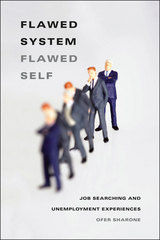 Flawed System/Flawed Self: Job Searching and Unemployment Experiences
Ofer Sharone
University of Chicago Press, 2013 Today 4.7 million Americans have been unemployed for more than six months. In France more than ten percent of the working population is without work. In Israel it’s above seven percent. And in Greece and Spain, that number approaches thirty percent. Across the developed world, the experience of unemployment has become frighteningly common—and so are the seemingly endless tactics that job seekers employ in their quest for new work.
Flawed System/Flawed Self delves beneath these staggering numbers to explore the world of job searching and unemployment across class and nation. Through in-depth interviews and observations at job-search support organizations, Ofer Sharone reveals how different labor-market institutions give rise to job-search games like Israel’s résumé-based “spec games”—which are focused on presenting one’s skills to fit the job—and the “chemistry games” more common in the United States in which job seekers concentrate on presenting the person behind the résumé. By closely examining the specific day-to-day activities and strategies of searching for a job, Sharone develops a theory of the mechanisms that connect objective social structures and subjective experiences in this challenging environment and shows how these different structures can lead to very different experiences of unemployment.
Fleet River
James Longenbach
University of Chicago Press, 2003 Fleet River traces the journey of two travelers through landscapes earthly and otherworldly, following the river as it turns, dips underground, then reemerges unexpectedly as they fall in love with the world, as though for the first time. Mimicking the river's shifting course, the poems revise themselves as the book moves forward, turning against their own best discoveries, proving that the pilgrims' journey is less the discovery of love than the re-creation, poem by poem, of love's possibilities.
 Fleeting Things: English Poets and Poems, 1616–1660
Gerald Hammond
Harvard University Press, 1990 Distinguished by its unconventional approach and extraordinary range, this beautifully written book offers new insights into the works—and times—of poets writing between the death of Shakespeare and the execution of Charles I. Well over a hundred original readings provide illuminating discussions of the “canonical” poets such as Milton, Herbert, and Jonson, as well as enlightening reevaluations of many “minor” poets, including Herrick, Waller, and Lovelace. The discussion is organized around five themes: Counselors and Kings, Poets, Life and Death, The Commonwealth, and Men and Women. This organization allows Hammond to use shared references and images in the works to reveal previously unsuspected connections between poems of very different schools, and to illustrate in considerable depth how seventeenth-century poetry reflects the political, social, religious, and sexual experience of the uncertain pre-Restoration years. The book has a subtle, almost musical structure; each chapter quietly picks up the threads of discussion in previous chapters. The result is a seamlessly woven narrative that guides the reader lightly, never intruding on the reading of the poetry itself.
Seventeenth-century poets betray a reluctance to separate life from art; many of their poems are about apparently trivial or unfamiliar things—the “fleeting things” of the title. Gerald Hammond has used his rare knowledge of the period to unlock images and references that have previously been overlooked or misunderstood, creating a fresh view of the poetry—and poets—of this fascinating period.
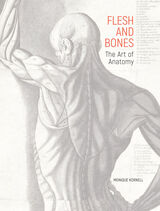 Flesh and Bones: The Art of Anatomy
Monique Kornell
J. Paul Getty Trust, The, 2022 This illustrated volume examines the different methods artists and anatomists used to reveal the inner workings of the human body and evoke wonder in its form. For centuries, anatomy was a fundamental component of artistic training, as artists such as Leonardo da Vinci and Michelangelo sought to skillfully portray the human form. In Europe, illustrations that captured the complex structure of the body—spectacularly realized by anatomists, artists, and printmakers in early atlases such as Andreas Vesalius’s De humani corporis fabrica libri septem of 1543—found an audience with both medical practitioners and artists. Flesh and Bones examines the inventive ways anatomy has been presented from the sixteenth through the twenty-first century, including an animated corpse displaying its own body for study, anatomized antique sculpture, spectacular life-size prints, delicate paper flaps, and 3-D stereoscopic photographs. Drawn primarily from the vast holdings of the Getty Research Institute, the over 150 striking images, which range in media from woodcut to neon, reveal the uncanny beauty of the human body under the skin. This volume is published to accompany an exhibition on view at the Getty Research Institute at the Getty Center from February 22 to July 10, 2022.
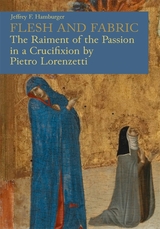 Flesh and Fabric: The Raiment of the Passion in a Crucifixion by Pietro Lorenzetti
Jeffrey F. Hamburger
Harvard University Press, 2024 Although the works of Pietro Lorenzetti (1280–1348) rank among the most famous of the fourteenth century, one of his panels, a small Crucifixion, has remained largely overlooked, despite its unique imagery. Combining three temporal horizons—past, present, and eschatological future—within an unparalleled allegorical presentation of the Crucifixion, this panel grants precedence to Clare of Assisi over Francis, founder of the Franciscan Order. Probably created for a nun, Lorenzetti’s painting turns abstruse allegory into a vehicle for a self-conscious meditation on the power of painting itself. In Flesh and Fabric: The Raiment of the Passion in a Crucifixion by Pietro Lorenzetti, Jeffrey F. Hamburger explores the historical context of this panel as well as the subtleties of Pietro’s painting technique and iconographic imagination, enriching not only our understanding of one of the most innovative artists of the Trecento but also of Italian painting during one of its most generative periods. In addition to an iconographical analysis and historical contextualization of the panel, this volume includes a technical analysis that reveals the subtleties of the painting’s technique and reconstructs its original format, demonstrating that, from the start, this panel was a freestanding devotional image.
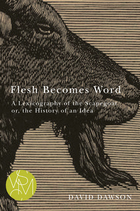 Flesh Becomes Word: A Lexicography of the Scapegoat or, the History of an Idea
David Dawson
Michigan State University Press, 2013 Though its coinage can be traced back to a sixteenth-century translation of Leviticus, the term “scapegoat” has enjoyed a long and varied history of both scholarly and everyday uses. While WilliamTyndale employed it to describe one of two goats chosen by lot to escape the Day of Atonement sacrifices with its life, the expression was soon far more widely used to name victims of false accusation and unwarranted punishment. As such, the scapegoat figures prominently in contemporary theories of violence, from its elevation by Frazer to a ritual category in his ethnological opus The Golden Bough to its pivotal roles in projects as seemingly at odds as Jacques Derrida’s deconstruction of Western metaphysics and René Girard’s theory of cultural origins. A copiously researched and groundbreaking investigation of the expression in such wide use today, Flesh Becomes Word follows the scapegoat from its origins in Mesopotamian ritual across centuries of typological reflection on the meaning of Jesus’ death, to its first informal uses in the pornographic and plague literature of the 1600s, and finally into the modern era, where the word takes recognizable shape in the context of the New English Quaker persecution and proto-feminist diatribe at the close of the seventeenth century. The historical circumstances of its lexical formation prove rich in implications for current theories of the scapegoat and the making of the modern world alike.
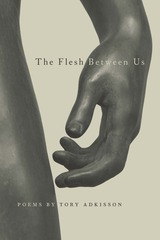 The Flesh Between Us
Tory Adkisson
Southern Illinois University Press, 2021 Eroticism cut from classical mythology, ritual, and intimacy
In The Flesh Between Us the speaker explores our connections to each other, whether they be lovely or painful, static or constantly shifting, or, above all, unavoidable and necessary. Intensely and unapologetically homoerotic in content and theme, The Flesh Between Us sensuously conducts the meetings between strangers, between lovers, between friends and family, between eater and eaten, between the soul and the body that contains it. Pushing the boundaries of what has been traditionally acceptable for gay and erotic content and themes, the poems adapt persona, Greek mythology, Judaism, and classic poetic forms to interrogate the speaker’s relationship to god and faith, to love and sex, to mother and father.
Stark and mythical, the imagery draws from the language of animals and nature. Episodes of kink tangle with creatures of forests and lore. In this tumult, the lines of poetry keep a sense of boundary and distance by the seeming incompatibility of their subjects: daybreak and dissection, human and insect, worship and reality. The touch of irreconcilable bodies, in Adkisson’s language, intimates the precise moment of love. The idea of love moves viscerally through rib, lung, throat, and mouth. The poems show how flesh opens in so many ways, in prayers, in bleeds, in ruts. The flesh, opened, begins to swell. If there is guilt in this, Adkisson’s poems refuse the placid satisfaction of confession. Whatever attachments the reader dares to draw must be made with blade or tongue. The reader must commit to the potential violence narrated by these poems.
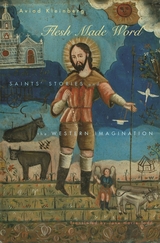 Flesh Made Word: Saints’ Stories and the Western Imagination
Aviad Kleinberg
Harvard University Press, 2008 In the fourth century a new narrative genre captured the imagination of the faithful—the moving accounts of the lives of Christian saints. Willing to die gruesome deaths or endure constant suffering, saints conveyed a powerful message: God was still present in the world. He continues to manifest His powers and communicate His messages through His special friends—the saints. What kind of Christianity do we find in these stories? In this original and provocative work, Aviad Kleinberg argues that the saints’ stories of medieval Europe were more than edifying entertainment; they retain an alternative theology, often quite different from the formal theology of the Church. By telling and retelling the story of virtue and salvation, by expanding the religious imagination of the West, they were shaping and reshaping Christianity itself.
In this study of stories from the fourth through the fourteenth centuries, we meet the tender Perpetua bidding farewell to her infant son, Simeon Stylites turning himself into a rotting corpse, Francis of Assisi finding joy in suffering, and Fra Ginepro playing the fool, for Christ. We meet holy anchorites, headstrong virgins, fearless dragon slayers, and scheming politicians. Kleinberg unveils the inner contradictions, the subversive ideas, and the deadly power games that lay behind the making of the Western imagination. People, ideas, and passions—often relegated to the back pews—take center stage in this daring book. This is a story of how stories change lives.
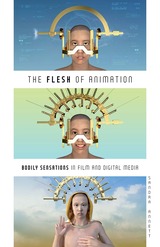 The Flesh of Animation: Bodily Sensations in Film and Digital Media
Sandra Annett
University of Minnesota Press, 2024 How animation can reconnect us with bodily experiences
Film and media studies scholarship has often argued that digital cinema and CGI provoke a sense of disembodiment in viewers; they are seen as merely fantastic or unreal. In her in-depth exploration of the phenomenology of animation, Sandra Annett offers a new perspective: that animated films and digital media in fact evoke vivid embodied sensations in viewers and connect them with the lifeworld of experience. Starting with the emergence of digital technologies in filmmaking in the 1980s, Annett argues that contemporary digital media is indebted to the longer history of animation. She looks at a wide range of animation—from Disney films to anime, electro swing music videos to Vocaloids—to explore how animation, through its material forms and visual styles, can evoke bodily sensations of touch, weight, and orientation in space. Each chapter discusses well-known forms of animation from the United States, France, Japan, South Korea, and China, examining how they provoke different sensations in viewers, such as floating and falling in Howl’s Moving Castle and My Beautiful Girl Mari, and how the body is mediated in films that combine animation and live action, as seen in Who Framed Roger Rabbit and Song of the South. These films set the stage for an exploration of how animation and embodiment manifest in contemporary global media, from CGI and motion capture in Disney’s “live action remakes” to new media installations by artists like Lu Yang. Leveraging an array of case studies through a new approach to film phenomenology, The Flesh of Animation offers an enlightening discussion of why animation provides a sensational experience for viewers not replicable through other media forms.
 The Flesh of the Matter: A Critical Forum on Hortense Spillers
Edited by Margo Natalie Crawford and C. Riley Snorton
Vanderbilt University Press, 2024 PROSE Awards Category Winner—Media and Cultural Studies, 2025
Hortense Spillers is one of the most important literary critics and Black feminist scholars of the last fifty years. Her 1987 scholarly article “Mama’s Baby, Papa’s Maybe: An American Grammar Book” is one of the most-cited essays in African American literary studies.
Edited by Margo Natalie Crawford and C. Riley Snorton, The Flesh of the Matter: A Critical Forum on Hortense Spillers is the first collection to take up directly how Spillers’s writing on literature, culture, and theory have been signal posts to the varied and universal threads of Black thought, as well as countless other areas of the academy. Interspersed with archival fragments from Spillers’s papers kept at the Pembroke Center for Feminist Thought at Brown University, the fourteen essays in this collection demonstrate a fidelity to the ways of reading Spillers has taught us, the nomenclature of enslavement keyed into the American lexicon, and the ways that history permeates our cultural boundaries today.
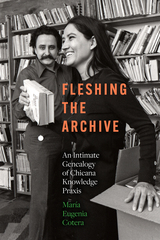 Fleshing the Archive: An Intimate Genealogy of Chicana Knowledge Praxis
María Eugenia Cotera
University of Texas Press, 2025 The history of the Chicana por mi Raza Digital Memory Collective, an archive dedicated to preserving Chicana feminist knowledge of the 1970s and memory work. The late 1960s and early 1970s witnessed an explosion of publishing by Chicana activists as they took part in the Movimiento against oppression of ethnic Mexicans in the United States. Today, thousands of these documents, including written works and oral histories, have been assembled by the Chicana por mi Raza Digital Memory Collective. Drawing on these unique resources, Fleshing the Archive traces the innovative Chicana knowledge projects of the Movimiento years. Seeking to think with the past rather than about it, María Cotera explores transgressive sites and discourses of Chicana knowledge, from poems and essays to newspapers, bibliographies, and testimonies. Often published independently and distributed by readers themselves, these works embodied a praxis of feminist and queer consciousness-raising. Observing the startling convergences between Chicana praxis of the 1970s and digital knowledge production in the present, Cotera argues that the Chicana archive enables transformative moments of recognition across time that unsettle supposedly objective accounts of history. The materials preserved by Chicana por mi Raza offer Chicana scholars a model of teaching and learning liberated from a corporate academy that is increasingly hostile to intellectual inquiry.
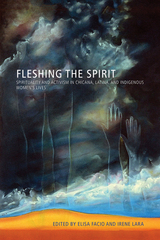 Fleshing the Spirit: Spirituality and Activism in Chicana, Latina, and Indigenous Women’s Lives
Edited by Elisa Facio and Irene Lara
University of Arizona Press, 2014 Fleshing the Spirit brings together established and new writers exploring the relationships between the physical body, the spirit and spirituality, and social justice activism. Examining the complex and dynamic connections among these concepts, the writers emphasize the value of “flesh and blood experience” as a site of knowledge. They argue that spirituality—something quite different from institutional religious practice—can heal the mind/body split and set the stage for social change. Spirituality, they argue, is a necessary component of an alternative political agenda focused on equitable social and ecological change.
The anthology incorporates different genres of writing—such as poetry, testimonials, critical essays, and historical analysis—and stimulates the reader to engage spirituality in a critical, personal, and creative way. This interdisciplinary work is the first that attempts to theorize the radical interconnection between women of color, spirituality, and social activism. Before transformative political work can be done, the authors say in multiple ways, we must recognize that our spiritual need is a desire to more fully understand our relations with others. Conflict experienced on many levels sometimes severs those relations, separating us from others along racial, class, gender, sexual, national, or other socially constructed lines.
Fleshing the Spirit offers a spiritual journey of healing, health, and human revolution. The book’s open invitation to engage in critical dialogue and social activism—with the spirit and spirituality at the forefront—illuminates the way to social change and the ability to live in harmony with life’s universal energies.
Contributors
Volume Editors
Elisa Facio
Irene Lara
Chapter Authors
Angelita Borbón
Norma E. Cantú
Berenice Dimas
C. Alejandra Elenes
Alicia Enciso Litschi
Oliva M. Espín
Maria Figueroa
Patrisia Gonzales
Inés Hernández- Avila
Rosa María Hernández Juárez
Cinthya Martinez
Lara Medina
Felicia Montes
Sarahi Nuñez- Mejia
Laura E. Pérez
Brenda Sendejo
Inés Talamantez
Michelle Téllez
Beatriz Villegas
 Fleshly Tabernacles: Milton and the Incarnational Poetics of Revolutionary England
Bryan Adams Hampton
University of Notre Dame Press, 2012
In Fleshly Tabernacles, Bryan Hampton examines John Milton’s imaginative engagement with, and theological passion for, the Incarnation. As aesthetic symbol, theological event, and narrative picture of humanity’s potential, the Incarnation profoundly governs the way Milton structures his 1645 Poems, ponders the holy office of the pulpit, reflects on the ends of speech and language, interprets sacred scripture or secular texts, and engages in the radical politics of the Civil War and Interregnum. Richly drawing upon the disciplines of historical and postmodern theology, philosophical hermeneutics, theological aesthetics, and literary theory, Fleshly Tabernacles pursues the wide-ranging implications of the heterodox, perfectionist strain in Milton’s Christology. Hampton illustrates how vibrant Christologies generated and shaped particular brands of anticlericalism, theories of reading and language, and political commitments of English nonconformist sects during the turbulent decades of the seventeenth century. Ranters and Seekers, Diggers and Quakers, Fifth monarchists and some Anabaptists—many of those identified with these radical groups proclaim that the Incarnation is primarily understood, not as a singular event of antiquity, but as a present eruption and charged manifestation within the life of the individual believer, such that faithful believers become “fleshly tabernacles” housing the Divine.
The perfectionist strain in Milton’s theology resonated in the works of the Independent preacher John Everard, the Digger Gerrard Winstanley, and the Quaker James Nayler. Fleshly Tabernacles intriguingly demonstrates how ideas of the incarnated Christ flourished in the world of revolutionary England, expressed in the notion that the regenerated human self could repair the ruins of church and state.
“Bryan Hampton’s book makes an original and important contribution to the field of Milton studies, as well as to the study of seventeenth-century radical English religious thought. His work has further implications for the study of comparative hermeneutics, proposing provocative continuities and correlations between medieval and early modern approaches to interpretation on the one hand, and contemporary theories of language and meaning on the other. Exhaustively researched and meticulously annotated, Hampton’s readings of incarnational epistemologies offer a wealth of insights and suggestive parallels among early modern writers who are not often taken together.” —Jeffrey Spencer Shoulson, University of Miami
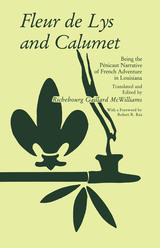 Fleur de Lys and Calumet: Being the Penicaut Narrative of French Adventure in Louisiana
Edited by Richebourg McWilliams
University of Alabama Press, 1988 Andre Penicaut, a carpenter, sailed with Iberville to the French province of Louisiana in 1699 and did not return to France until 1721. The book he began in the province and finished upon his return to France is an eyewitness account of the first years of the French colony, which stretched along the Gulf Coast from Florida to Texas and in the Mississippi Valley from the Balize to the Illinois country. As a ship carpenter, Penicaut was chosen as a member of several important expeditions: he accompanied Le Sueur up the Mississippi River in 1700 to present-day Minnesota, and he went with Juchereau de St. Denis on the first journey from Mobile to the Red River and overland to the Rio Grande, to open trade with the Spaniards in Mexico. Penicaut helped to build the first post in Louisiana, at Old Biloxi, and the second post on the Mobile River.
Penicaut was at his best when describing the lives and social customs of the Indians of the region. He saw them in realistic terms, showing no prejudice toward their native habits. Neither were his French colleagues cast in heroic or villainous molds—though their accomplishments must strike modern readers as truly epic.
When first published, Fleur de Lys and Calumet was a major stimulus to scholarship in the field. This new edition will be welcomed by a new generation of scholars and readers interested in the colonial history of the Deep South and the Mississippi Valley.
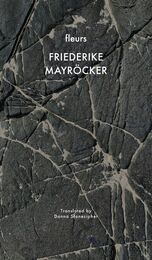 fleurs
Friederike Mayröcker
Seagull Books, 2026 An uncompromising masterpiece that transforms memory and renewal into a wild world of words.
Fleurs—flowers, flower petals—a title that might suggest a gentle world of blooming fields and soft breezes. But in the hands of Friederike Mayröcker, one of the greatest German-language poets of the twentieth and twenty-first centuries, this is a book of a very different kind. It is a wild, vivid journey into a rich, elemental landscape.
If you follow Mayröcker’s path, you find not a comfortable meadow but steep, stony ground—a place where her inimitable voice rings out in all its power and purity. Unsentimental and crystal clear, Mayröcker’s writing is driven by a single purpose: to create images of remarkable vividness in a language as free, bold, and fresh as if it were newly invented.
The final installment of Mayröcker’s trilogy, following études and cahier, fleurs is a book of memory and renewal, protest and revelation—a testimony to the enduring magic of writing itself.
 Flexible AC Transmission Systems (FACTS)
Yong Hua Song
The Institution of Engineering and Technology, 1999 The rapid development of power electronics technology provides exciting opportunities to develop new power system equipment for better utilisation of existing systems. Deregulation of the supply industry worlwide, and the resulting competition, is forcing utilities to operate their facilities at ever higher efficiency, driving this trend. During the last decade, a number of control devices under the term flexible ac transmission systems (FACTS) technology have been proposed and implemented. This book provides a comprehensive guide to FACTS, covering all the major aspects in research and development of FACTS technologies. Various real-world applications are also included to demonstrate the issues and benefits of applying FACTS. Written by international experts in the field from both industry and academia, this book will be a useful reference for professional engineers involved in the operation and control of modern power systems. It will also be of value to postgraduate students and researchers.
Flexible and Cognitive Radio Access Technologies for 5G and Beyond
Hüseyin Arslan
The Institution of Engineering and Technology, 2020 Standards for 5G and beyond will require communication systems with a much more flexible and cognitive design to support a wide variety of services including smart vehicles, smart cities, smart homes, IoTs, and remote health. Although future 6G technologies may look like an extension of their 5G counterparts, new user requirements, completely new applications and use-cases, and networking trends will bring more challenging communication engineering problems. New communication paradigms in different layers will be required, in particular in the physical layer of future wireless communication systems.
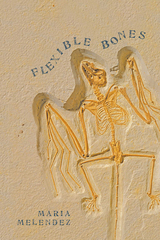 Flexible Bones
Maria Melendez
University of Arizona Press, 2010 The remarkable and wholly insightful poems collected here bounce the reader through a world where words are not bricks but trampolines—springy, un-static-y things. Feisty, spirited, serious and comic, these poems address a wild range of subjects with an equally wild range of tones. As readers, we find ourselves holding on with white knuckles, but we always want to turn the page.
The most modern of roller coasters ride on soft rubber tires and slithery smooth tracks. Gone are the days of jouncing along on steel wheels, smacking over hard metal joints. So it is with this book. Although readers are hurtled through time, space, and a universe of emotions, the ride is seductively smooth—and the transitions surprisingly seamless.
In the prologue, our attention bends to bridges, free-tail bats, soldiers, and peacemakers. These poems prepare us to watch for hopeful signs in the work ahead. In the first section, the spiritual seems to flow into the geopolitical—not in a hammer-you-over-the-head kind of way but in a blood-through-the-heart sort of way. In the second section, the spiritual mingles with the organic in a more personal way. By the end of the ride, we are aware that we have taken a trip with an intellectually fearless bushwhacker leading the way.
Anyone who has ever contemplated The Simpsons, sex-offender registries, desert internment camps, bats in flight, wars that never end, “la virgen,” grasshoppers, Google, or the cosmos will find a kindred spirit in Maria Melendez and a warm welcome in her work.
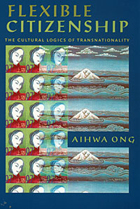 Flexible Citizenship: The Cultural Logics of Transnationality
Aihwa Ong
Duke University Press, 1999 Few recent phenomena have proved as emblematic of our era, and as little understood, as globalization. Are nation-states being transformed by globalization into a single globalized economy? Do global cultural forces herald a postnational millennium? Tying ethnography to structural analysis, Flexible Citizenship explores such questions with a focus on the links between the cultural logics of human action and on economic and political processes within the Asia-Pacific, including the impact of these forces on women and family life. Explaining how intensified travel, communications, and mass media have created a transnational Chinese public, Aihwa Ong argues that previous studies have mistakenly viewed transnationality as necessarily detrimental to the nation-state and have ignored individual agency in the large-scale flow of people, images, and cultural forces across borders. She describes how political upheavals and global markets have induced Asian investors, in particular, to blend strategies of migration and of capital accumulation and how these transnational subjects have come to symbolize both the fluidity of capital and the tension between national and personal identities. Refuting claims about the end of the nation-state and about “the clash of civilizations,” Ong presents a clear account of the cultural logics of globalization and an incisive contribution to the anthropology of Asia-Pacific modernity and its links to global social change. This pioneering investigation of transnational cultural forms will appeal to those in anthropology, globalization studies, postcolonial studies, history, Asian studies, Marxist theory, and cultural studies.
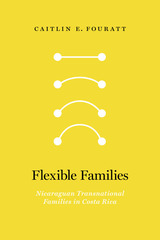 Flexible Families: Nicaraguan Transnational Families in Costa Rica
Caitlin Fouratt
Vanderbilt University Press, 2022 Flexible Families examines the struggles among Nicaraguan migrants in Costa Rica (and their families back in Nicaragua) to maintain a sense of family across borders. The book is based on more than twenty-four months of ethnographic fieldwork in Costa Rica and Nicaragua (between 2009 and 2012) and more than ten years of engagement with Nicaraguan migrant communities. Author Caitlin Fouratt finds that migration and family intersect as sites for triaging inequality, economic crisis, and a lack of state-provided social services.
The book situates transnational families in an analysis of the history of unstable family life in Nicaragua due to decades of war and economic crisis, rather than in the migration process itself, which is often blamed for family breakdown in public discourse. Fouratt argues that the kinds of family configurations often seen as problematic consequences of migration—specifically single mothers, absent fathers, and grandmother caregivers—represent flexible family configurations that have enabled Nicaraguan families to survive the chronic crises of the past decades. By examining the work that goes into forging and sustaining transnational kinship, the book argues for a rethinking of national belonging and discourses of solidarity.
In parallel, the book critically examines conditions in Costa Rica, especially the ways the instabilities and inequalities that have haunted the rest of the region have begun to take shape there, resulting in perceptions of increased crime rates and a declining quality of life. By linking this crisis of Costa Rican exceptionalism to recent immigration reform, the book also builds on scholarship about the production and experiences of immigrant exclusion. Flexible Families offers insight into the impacts of increasingly restrictive immigration policies in the everyday lives of transnational families within the developing world.
Flexible Robot Manipulators: Modelling, simulation and control
M. Osman Tokhi
The Institution of Engineering and Technology, 2008 The ever increasing utilisation of robotic manipulators for various applications in recent years has been motivated by the requirements and demands of industrial automation. Among these, attention is focused more towards flexible manipulators, due to various advantages they offer compared to their rigid counterparts. Flexural dynamics have constituted the main research challenge in modelling and control of such systems; research activities have accordingly concentrated on the development of methodologies to cope with this.
Flexible Robot Manipulators: Modelling, simulation and control
M.O. Tokhi
The Institution of Engineering and Technology, 2017 Industrial automation is driving the development of robot manipulators in various applications, with much of the research effort focussed on flexible manipulators and their advantages compared to their rigid counterparts. This book reports recent advances and new developments in the analysis and control of these robot manipulators.
Flexible Semantics for Reinterpretation Phenomena
Markus Egg
CSLI, 2005 Deriving the correct meaning of such colloquial expressions as "I am parked out back" requires a unique interaction of knowledge about the world with a person's natural language tools, e.g., "I have a car that is parked in the back," and not the wrong literal one. In this volume, Markus Egg examines how natural language rules and world knowledge work together to produce correct understandings of expressions that cannot be fully understood through literal reading. An in-depth and exciting work on semantics and natural language, this volume will be essential reading for scholars in computational linguistics.
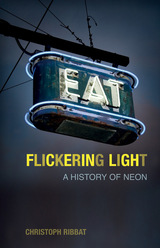 Flickering Light: A History of Neon
Christoph Ribbat
Reaktion Books, 2013 Without neon, Las Vegas might still be a sleepy desert town in Nevada and Times Square merely another busy intersection in New York City. Transformed by the installation of these brightly colored signs, these destinations are now world-famous, representing the vibrant heart of popular culture. But for some, neon lighting represents the worst of commercialism. Energized by the conflicting love and hatred people have for neon, Flickering Light explores its technological and intellectual history, from the discovery of the noble gas in late nineteenth-century London to its fading popularity today. Christoph Ribbat follows writers, artists, and musicians—from cultural critic Theodor Adorno, British rock band the Verve, and artist Tracey Emin to Vladimir Nabokov, Langston Hughes, and American country singers—through the neon cities in Europe, America, and Asia, demonstrating how they turned these blinking lights and letters into metaphors of the modern era. He examines how gifted craftsmen carefully sculpted neon advertisements, introducing elegance to modern metropolises during neon’s heyday between the wars followed by its subsequent popularity in Las Vegas during the 1950s and '60s. Ribbat ends with a melancholy discussion of neon’s decline, describing how these glowing signs and installations came to be seen as dated and characteristic of run-down neighborhoods. From elaborate neon lighting displays to neglected diner signs with unlit letters, Flickering Light tells the engrossing story of how a glowing tube of gas took over the world—and faded almost as quickly as it arrived.
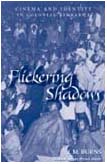 Flickering Shadows: Cinema and Identity in Colonial Zimbabwe
J. M. Burns
Ohio University Press, 2002 Every European power in Africa made motion pictures for its subjects, but no state invested as heavily in these films, and expected as much from them, as the British colony of Southern Rhodesia. Flickering Shadows is the first book to explore this little-known world of colonial cinema. J. M. Burns pieces together the history of the cinema in Rhodesia, examining film production, audience reception, and state censorship, to reconstruct the story of how Africans in one nation became consumers of motion pictures. Movies were a valued “tool of empire” designed to assimilate Africans into a new colonial order. Inspired by an inflated confidence in the medium, Rhodesian government offcials created an African Film industry that was unprecedented in its size and scope. Transforming the lives of their subjects through cinema proved more complicated than white officials had anticipated. Although Africans embraced the medium with enthusiasm, they expressed critical opinions and demonstrated decided tastes that left colonial officials puzzled and alarmed. Flickering Shadows tells the fascinating story of how motion pictures were introduced and negotiated in a colonial setting. In doing so, it casts light on the history of the globalization of the cinema. This work is based on interviews with white and black filmmakers and African audience members, extensive archival research in Africa and England, and viewings of scores of colonial films.
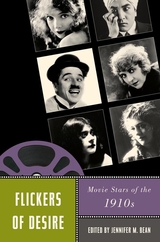 Flickers of Desire: Movie Stars of the 1910s
Bean, Jennifer M
Rutgers University Press, 2011 Today, we are so accustomed to consuming the amplified lives of film stars that the origins of the phenomenon may seem inevitable in retrospect. But the conjunction of the terms "movie" and "star" was inconceivable prior to the 1910s. Flickers of Desire explores the emergence of this mass cultural phenomenon, asking how and why a cinema that did not even run screen credits developed so quickly into a venue in which performers became the American film industry's most lucrative mode of product individuation. Contributors chart the rise of American cinema's first galaxy of stars through a variety of archival sources--newspaper columns, popular journals, fan magazines, cartoons, dolls, postcards, scrapbooks, personal letters, limericks, and dances. The iconic status of Charlie Chaplin's little tramp, Mary Pickford's golden curls, Pearl White's daring stunts, or Sessue Hayakawa's expressionless mask reflect the wild diversity of a public's desired ideals, while Theda Bara's seductive turn as the embodiment of feminine evil, George Beban's performance as a sympathetic Italian immigrant, or G. M. Anderson's creation of the heroic cowboy/outlaw character transformed the fantasies that shaped American filmmaking and its vital role in society.
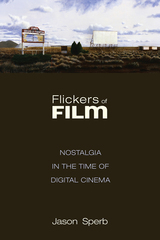 Flickers of Film: Nostalgia in the Time of Digital Cinema
Sperb, Jason
Rutgers University Press, 2015 Whether paying tribute to silent films in Hugo and The Artist or celebrating arcade games in Tron: Legacy and Wreck-It-Ralph, Hollywood suddenly seems to be experiencing a wave of intense nostalgia for outmoded technologies. To what extent is that a sincere lament for modes of artistic production that have nearly vanished in an all-digital era? And to what extent is it simply a cynical marketing ploy, built on the notion that nostalgia has always been one of Hollywood’s top-selling products?
In Flickers of Film, Jason Sperb offers nuanced and unexpected answers to these questions, examining the benefits of certain types of film nostalgia, while also critiquing how Hollywood’s nostalgic representations of old technologies obscure important aspects of their histories. He interprets this affection for the prehistory and infancy of digital technologies in relation to an industry-wide anxiety about how the digital has grown to dominate Hollywood, pushing it into an uncertain creative and economic future. Yet he also suggests that Hollywood’s nostalgia for old technologies ignores the professionals who once employed them, as well as the labor opportunities that have been lost through the computerization and outsourcing of film industry jobs.
Though it deals with nostalgia, Flickers of Film is strikingly cutting-edge, one of the first studies to critically examine Pixar’s role in the film industry, cinematic representations of videogames, and the economic effects of participatory culture. As he takes in everything from Terminator: Salvation to The Lego Movie, Sperb helps us see what’s distinct about this recent wave of self-aware nostalgic films—how Hollywood nostalgia today isn’t what it used to be.
 Flickers: Poems
William Trowbridge
University of Arkansas Press, 2000 In his latest collection of poems, William Trowbridge explores the fascination Americans have with movies, how “flicks” allow us to temporarily forget our problems and, ironically, to forget that real conflicts are what make us human. The language he uses is the American language of pop culture: sports talk, movie talk, shoptalk, and clichés—all are blended together into carefully crafted lines that are uniquely Trowbridge’s. Readers will be delighted to follow each poem to its effectively understated end.
These poems are dark comedies that capture both the eerie and the ordinary. This balance is not easily achieved, but like a veteran comedian executing a pratfall, Trowbridge makes it all seem natural. His surreal family, the Glads, satirizes life in suburbia and reflects the often absurd margins of our urban lifestyle. By contrast, a group of poems revolving around a packing house in Kansas City (Trowbridge worked there as a young man), reminds us of those darker places in our lives that exist just “across the street from the ledgers and lapels.”
The variety of subjects Trowbridge works with is refreshing. Whether he is writing about Buster Keaton, Fred Astaire, June bugs, baseball, the holocaust, Cadillacs, or old dogs, his eye is always focused on the turn of phrase that will catch us off guard. His well-crafted lines are full of wit and humor. He approaches his subjects like Coyote approaches Fox—smiling, ready to expose his dear friend to the reality of his existence through sleight of hand. And, like Coyote, he teaches us to laugh at ourselves or perish under the weight of our everyday lives.
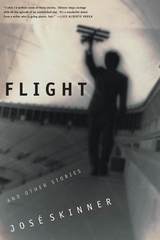 Flight And Other Stories
José Skinner
University of Nevada Press, 2001 In this rich group of stories about Latinos in the American Southwest, Skinner explores many themes. "Archangela's Place" features a wonderful Mexican character who weaves herself permanently into the lives of an Anglo family with enduring results. "Flight" tackles racial misunderstanding between an urban African-American and a rural Chicano woodcutter. Coming-of-age stories, "Eloy" and "Every Head's A World," illustrate in various degrees of tragedy and comedy the complexities faced by Hispanic-American youth. "Careful" is an ironic and humorous story of an encounter between two gay teenagers, one Hispanic and one Anglo, that is admirably honest and compelling in its sensuality. Among the rest are two pure romances, "Pickup," which is like a tormented country-western song, and "Spring," a witty story of love unrequited for forty years until, finally, the elderly lovers can openly and tenderly embrace in a passionate and charming conclusion. The stories in this collection show a wide range of compassion and understanding of the often confusing rules of love in a multicultural world.
 The Flight Cage
Rebecca Dunham
Tupelo Press, 2010 Rebecca Dunham’s thrilling new book is a multilayered account of the struggles and torments faced by women as wives, mothers, and daughters — a psychological journey in which the poet seeks communion with writers from the past, including feminist pioneer Mary Wollstonecraft.
Using the metaphor of a “flight cage,” where birds are held captive, as physical manifestation of the space from which her speakers address us, Dunham reinvigorates the persona poem. Instead of “performing” historical figures such as Wollstonecraft, Dorothy Wordsworth, Anna Akhmatova, and Charlotte Perkins Gilman, she invites them to inhabit her, flickering in and out of sight, refusing an easy artifice.
A virtuoso of the phrase and image, Dunham displays a daring range of prosody. Drawing upon Wollstonecraft’s experimental travel narrative, the poet creates a threshold upon which the traditional “crown of sonnets” can be opened to the sudden breakage of collaged text, remaking both the received form and the now-conventional contemporary experimental poem.
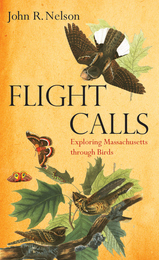 Flight Calls: Exploring Massachusetts through Birds
John R. Nelson
University of Massachusetts Press, 2019 The paths of different birds look like double helixes, flowing strands of hair, and migrating serpents, and they beckon with calls that have definite meanings. These mysterious creatures inspire growing numbers of birders in their passionate pursuit of new species, and writer John R. Nelson is no exception. In Flight Calls, he takes readers on explorations to watch, hear, and know Massachusetts's hummingbirds, hawks, and herons along the coasts and in the woodlands, meadows, and marshes of Cape Ann, Cape Cod, the Great Marsh, Mount Auburn Cemetery, the Quabbin wilderness, Mount Wachusett, and elsewhere.
With style, humor, and a sense of wonder, Nelson blends his field adventures with a history of the birding community; natural and cultural history; bird stories from authors such as Henry David Thoreau, Emily Dickinson, and Mary Oliver; current scientific research; and observations about the fascinating habits of birds and their admirers. These essays are capped off with a plea for bird conservation, in Massachusetts and beyond.
Flight Control Systems: Practical issues in design and implementation
Roger W. Pratt
The Institution of Engineering and Technology, 2000 A complete reference on modern flight control methods for fixed-wing aircraft, this authoritative book includes contributions from an international group of experts in their respective specialised fields, largely from industry. Split into two parts, the first section of the book deals with the fundamentals of flight control systems design, while the second concentrates on genuine applications based on the modern control methods used in the latest aircraft.
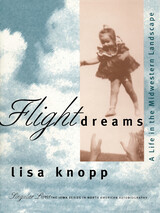 Flight Dreams: A Life in the Midwestern Landscape
Lisa Knopp
University of Iowa Press, 1998 “When I was eleven the world was filled with birds,”writes Lisa Knopp of her girlhood in Burlington, Iowa. Picking up where she left off in her first book, Field of Vision, Knopp knits together sections of her life story through a pattern of images drawn from nature. The most prevalent of these unifying themes are metaphors of flight—birds, wind, moving upward and outward and across the midwestern landscape from Nebraska and Iowa to southern Illinois. Reminiscent of Thoreau's introspective nature writing and Dillard's taut, personal prose, each chapter in Flight Dreams stands alone as a distinct narrative, yet each is linked by profoundly personal descriptions of dreams, the natural world, defining experiences, and chance encounters with people that later prove to be fateful. Part Eastern meditation, part dream sequence, part historical reconstruction, Flight Dreams testifies to a deep understanding of how the natural world—its visible and invisible elements—guides our destinies.
The Flight from Ambiguity: Essays in Social and Cultural Theory
Donald N. Levine
University of Chicago Press, 1985 The essays turn about a single theme, the loss of the capacity to deal constructively with ambiguity in the modern era. Levine offers a head-on critique of the modern compulsion to flee ambiguity. He centers his analysis on the question of what responses social scientists should adopt in the face of the inexorably ambiguous character of all natural languages. In the course of his argument, Levine presents a fresh reading of works by the classic figures of modern European and American social theory—Durkheim, Freud, Simmel and Weber, and Park, Parsons, and Merton.
 Flight From Fiesta
Frank Waters
Ohio University Press, 1987 Frank Waters, whose work has spanned half a century, has continually attempted to depict the reconciliation of opposites, to heal the national wounds of polarization. Flight From Fiesta, Waters’ first novel in nearly two decades, is testimony to that aspiration, emerging as a moving and masterfully–told story of two characters who must discover the potential for common ground between their personalities. Set in Santa Fe in the mid–fifties, the story itself is deceptively simple. Elsie, a spoiled, self–centered ten–year–old Anglo tourist girl, has come to the annual Fiesta with her divorced mother and her mother’s lover. When Elsie runs away from her hotel, she encounters Inocencio, an old alcoholic Pueblo Indian now reduced to selling pottery beneath the portal of the Palace of the Governors. With childish cunning she maneuvers Inocencio into taking her away with him. In the wake of the child’s disappearance, as the local posse–mentality intensifies and Inocencio is suspected of kidnapping and perhaps molesting her, the frightened Indian flees to the hills, taking Elsie with him on a week–long odyssey through the mountains, towns, and pueblos of New Mexico. Waters’ eye is precise, providing sharp visual detail on very page. His ear is flawless, especially in his rendering of the laconic and stolid Indian speech patterns. All through his book there is an immediacy and a feel for place and culture that cannot be fabricated but must be gained, as Waters himself has gained it, through a lifetime among these people, these towns, and these mountains. The reconciliation of the two fugitives of Flight From Fiesta serves to point, not didactically or allegorically, but emotionally and spiritually, but emotionally and spiritually, to the possibility of the grander reconciliation that Waters envisions.
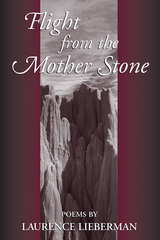 Flight from the Mother Stone: Poems
Laurence Lieberman
University of Arkansas Press, 2000 In his newest collection of poetry, Laurence Leiberman widens the scope of his previous Caribbean collections by drawing attention to the small enchanting islands of the Grenadines, a chain running between Grenada and St. Vincent. These outposts, often frequented by sailors, are mainly off the beaten tourist tracks. Lieberman’s poems bring to life all the overlooked people, hidden places, and indigenous but rarely seen animals which can be found on these islands. These poems are as powerful as voodoo, full of energetic narratives in which Lieberman acts as observer while his characters—native “Caribs” and friends—guide us through the mystifying world of Guyana and the Caribbean: the planting of tree farms, local myths and religious sects, the daily crises of manual laborers working in the gold and diamond mines, and encounters with watras and harpy eagles. Lieberman’s lines are rhythmic and strong; voices swirl in and out of his stanzas. From Lieberman’s own precise observations to his inclusion of Caribbean dialects, the language created here is deeply textured and unique. The majority of these poems are narratives, stories about a culture that is extremely attuned to the richness of its past. They remind their readers that no matter how diverse a society becomes, it remains irrevocably connected to the land it was born of and the plants and animals that struggle to survive in its midst.
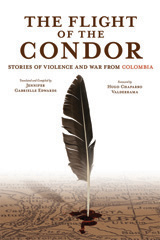 The Flight of the Condor: Stories of Violence and War from Colombia
Translated and compiled by Jennifer Gabrielle Edwards; Foreword by Hugo Chaparro
University of Wisconsin Press, 2007 After decades of violence of all kinds, what remains are the stories. History is revised and debated, its protagonists bear witness, its writers ensure that all the suffering has not been in vain. These stories from Colombia contain pain and love, and sometimes even humor, allowing us to see an utterly vibrant and pulsating country amidst so much death and loss. We encounter townspeople overcome by fear, a man begging unsuccessfully for his life, an execution delayed for Christmas, the sounds and smells of burning coffee plantations, and other glimpses of daily life.
This anthology reflects some of Colombia’s finest literary talent, and most of these stories appear here for the first time in English translation. They reveal the contradictions and complexities of the human condition, yet they also offer hope for the future. In their bold revelations of the depths of despair, these writers provide gripping portrayals of humanity’s tenacious resistance to those very depths.
Best Books for Regional General Audiences, selected by the American Association of School Librarians, and Outstanding Book, selected by the Public Library Association
Flight of the Golden Plover: The Amazing Migration Between Hawaii and Alaska
Debbie S. Miller
University of Alaska Press, 2011 The remarkable story of the golden plover’s annual migration, this beautifully illustrated nature title for young readers sees the small but mighty plover embark on a six-thousand-mile flight between the frozen Alaska tundra and gentle grassy slopes of the Hawaiian Islands. Equally at home in his two very different habitats, the once-endangered golden plover has evolved many behaviors and adaptations that make it perfectly well-suited to each of its homes, and this book contains many fascinating facts about them. Readers are also introduced to the plover’s neighbors and friends—from the giant Hawaiian goose, or nene, to the musk ox, grizzly bear, arctic fox, and sandhill crane.
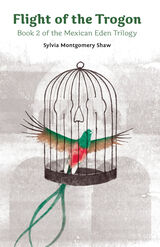 Flight of the Trogon: Book 2 of the Mexican Eden Trilogy (A Stand-alone Prequel and Sequel to Book 1)
Sylvia Montgomery Shaw
Swedenborg Foundation Publishers, 2023 A novel of love, revenge, and redemption set during three crucial years of the Mexican Revolution (1910–13).
When an eccentric Mexican general dies and leaves his entire fortune to Isabel Brentt, the American daughter-in-law he never met, his widow suspects foul play and seeks revenge against the young woman.
This is a story of love, the backlash of revenge, and the choices that define us: A young lawyer sets off on a quest to find the truth about the general’s death. A bodyguard is ordered to murder the man he is supposed to protect. A ruthless criminal falls in love with a prostitute. A priest is forced to maintain an elaborate lie. An accused patricide seeks redemption through a brotherhood of criminals. Above all, it is Isabel’s exploration of the problem of evil and of prayer as a pathway to inner freedom.
Sylvia Montgomery Shaw invites readers to follow the continuing romance of Benjamín and Isabel as both seek their freedom against the backdrop of a brutal war and learn the unexpected strength that can come from one’s inner will.
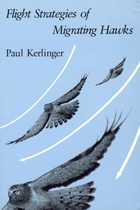 Flight Strategies of Migrating Hawks
Paul Kerlinger
University of Chicago Press, 1989 Hawks fly at very high altitudes, sometimes over water, and thus their flight behavior and migration patterns are extremely difficult to study. Now, based on nearly ten years of research, this book provides the most complete analysis to date of how hawks migrate. Paul Kerlinger has employed both direct observations and radar techniques to obtain a much more accurate understanding of the migratory behavior of hawks and the "decisions" they make in flight. And, he has integrated data on the flight behavior of raptors in general with information about their ecology, physiology, evolution, and nonmigratory behavior.
Kerlinger begins with an overview, discussing ecology and geography, research methods, natural history, and evolution, and atmospheric structure. He then addresses specific aspects of flight behavior: aerodynamics, morphology, mechanics, direction, altitude, flocking, water crossing, speed selection, daily distance traveled, and flight strategies. Kerlinger describes each aspect of behavior quantitatively, testing mechanistic hypotheses. In conclusion, he examines how migrants integrate these behavioral components. Throughout the text he draws comparisons between the migratory flight behavior of hawks and that of other taxa. By means of such comparisons, researchers can gain insight into the selective pressures that shape the behavior of migrant species.
Flight: Sunken Garden Poetry Prize
Chaun Ballard
Tupelo Press, 2018 Flight gives testament to the struggle of skin color in contemporary America. Utilizing both innovation and tradition, Chaun Ballard’s poems give voice to the silenced, proof to the disenfranchised, and life to the gone. “The poems in Flight unspool a rich and charmed history of survival into songs that celebrate the miracle of endurance in a country defined by the peculiar phenomenon of race; many of the poems in this collection explore (or allude to) the death of Michael Brown in Ferguson with a brilliance that is underscored by the poet’s extraordinary sense of sound to etch a new reality in our ears.” —Major Jackson
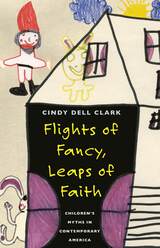 Flights of Fancy, Leaps of Faith: Children's Myths in Contemporary America
Cindy Dell Clark
University of Chicago Press, 1995 Santa Claus, the Easter Bunny, the Tooth Fairy—is there still a place for these imaginary creatures in today's skeptical society? More importantly, is it appropriate to encourage children to believe in these myths? In Flights of Fancy, Leaps of Faith, Cindy Dell Clark went straight to children and their parents for the answers. Using their insights, she offers fresh, new interpretations of the cultural and psychological roles these figures play in children's lives. Complete with children's vivid testimonies and colorful illustrations, this book is a revealing journey into a child's mind and world.
"A very enjoyable read, this book is a seriously researched record of children's myths, written with the observant accuracy of an anthropologist."—Nadja Reissland, Common Knowledge
"Clark posits some novel interpretations as well as intriguing glimpses for parents, teachers, and psychologists into the ways children shape our culture rather than merely being passive inheritors of it."—Booklist
Flights of Victory/Vuelos de Victoria
Ernesto Cardenal
Northwestern University Press, 1995 In this bilingual edition, Ernesto Cardenal celebrates his country's successful revolution against the Somoza regime. Recognized world-wide as a major poetic voice from Latin America, he also has long been an activist fighting for political freedom, and he served as Nicaragua's Minister of Culture from 1979-1988. In Flights of Victory, Ernesto Cardenal reflects on events of recent Nicaraguan history with poems about the insurrection against Somoza, the triumph of the popular movement, and the reconstruction of the country, from the unique perspective of a poet-participant.
Flinch of Song
Jennifer Militello
Tupelo Press, 2009 Jennifer Militello’s work is ruminative and lyrical but with an unusually theatrical verve, which is displayed in associative leaps so agile that readers will be exhilarated by the imagination at work (and play) in each poem. This powerfully unified first book grapples with what is simultaneously gigantic and miniscule in human existence: the momentous everyday dramas of love and family.
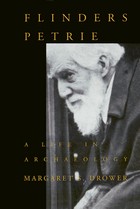 Flinders Petrie: A Life in Archaeology
Margaret S. Drower
University of Wisconsin Press, 1995 Flinders Petrie has been called the “Father of Modern Egyptology”—and indeed he is one of the pioneers of modern archaeological methods. This fascinating biography of Petrie was first published to high acclaim in England in 1985. Margaret S. Drower, a student of Petrie’s in the early 1930s, traces his life from his boyhood, when he was already a budding scholar, through his stunning career in the deserts of Egypt to his death in Jerusalem at the age of eighty-nine. Drower combines her first-hand knowledge with Petrie’s own voluminous personal and professional diaries to forge a lively account of this influential and sometimes controversial figure.
Drower presents Petrie as he was: an enthusiastic eccentric, diligently plunging into the uncharted past of ancient Egypt. She tells not only of his spectacular finds, including the tombs of the first Pharaohs, the earliest alphabetic script, a Homer manuscript, and a collection of painted portraits on mummy cases, but also of Petrie’s important contributions to the science of modern archaeology, such as orderly record-keeping of the progress of a dig and the use of pottery sherds in historical dating. Petrie's careful academic methods often pitted him against such rival archaeologists as Amélineau, who boasted he had smashed the stone jars he could not carry away to be sold, and Maspero and Naville, who mangled a pyramid at El Kula they had vainly tried to break into.
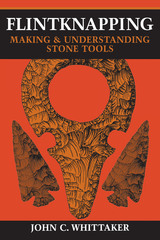 Flintknapping: Making and Understanding Stone Tools
By John C. Whittaker
University of Texas Press, 1994 Flintknapping is an ancient craft enjoying a resurgence of interest among both amateur and professional students of prehistoric cultures. John C. Whitaker's bestselling guide is a detailed handbook on flintknapping, written from the archaeological perspective of interpreting stone tools as well as making them. Flintknapping contains detailed, practical information on making stone tools. Whittaker starts at the beginner level and progresses to discussion of a wide range of techniques. He includes information on necessary tools and materials, as well as step-by-step instructions for making several basic stone tool types. Numerous diagrams allow the reader to visualize the flintknapping process, and drawings of many stone tools illustrate the discussions and serve as models for beginning knappers. Written for a wide amateur and professional audience, Flintknapping will be essential for practicing knappers as well as for teachers of the history of technology, experimental archaeology, and stone tool analysis.
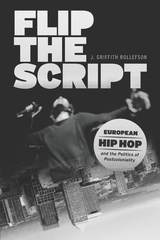 Flip the Script: European Hip Hop and the Politics of Postcoloniality
J. Griffith Rollefson
University of Chicago Press, 2017 Hip hop has long been a vehicle for protest in the United States, used by its primarily African American creators to address issues of prejudice, repression, and exclusion. But the music is now a worldwide phenomenon, and outside the United States it has been taken up by those facing similar struggles. Flip the Script offers a close look at the role of hip hop in Europe, where it has become a politically powerful and commercially successful form of expression for the children and grandchildren of immigrants from former colonies.
Through analysis of recorded music and other media, as well as interviews and fieldwork with hip hop communities, J. Griffith Rollefson shows how this music created by black Americans is deployed by Senegalese Parisians, Turkish Berliners, and South Asian Londoners to both differentiate themselves from and relate themselves to the dominant culture. By listening closely to the ways these postcolonial citizens in Europe express their solidarity with African Americans through music, Rollefson shows, we can literally hear the hybrid realities of a global double consciousness.
Flipping the Classroom: What Every ESL Teacher Should Know
Robyn Brinks Lockwood
University of Michigan Press, 2018 In Flipping the Classroom, Robyn Brinks Lockwood explains the educational phenomenon of flipped classrooms and dispels some of the common myths about flipping (e.g., “Flipped classrooms don’t use textbooks” and “Flipping requires me to make videos of myself”). The book defines flipping and answers questions teachers may have about the role of textbooks, technology, and class time. Lockwood also discusses the benefits of flipping for teachers and students and talks about lessons she’s learned from her experience flipping her own classes. In addition, she suggests ways ESL/EFL teachers may want to implement flipping in their classrooms.
The Floating Bridge
David Shumate
University of Pittsburgh Press, 2008 "Vanquishes once and for all the notion that the prose poem is somehow inherently 'not a real poem.' Exhibits a sustained level of innate lyricism and imagism rarely seen even in conventional lyric free verse. Unfailingly, the little prose jewels in 'The Floating Bridge' exhibit the most fundamental property of fine poems: each whole is many times greater than the sum of its parts."
--Cider Press Review
"Shumate's collection consists of over 50 gems...each one loaded with the living essence that hovers just beyond rationality's gate. [He] is a master of this forthright form. His book is a key to the room where dreams are stored."
--Nuvo
"I was deeply taken by David Shumate's The Floating Bridge. There is none better working now at this very difficult genre, the prose poem."
--Jim Harrison
 A Floating Chinaman: Fantasy and Failure across the Pacific
Hua Hsu
Harvard University Press, 2016 Who gets to speak for China? During the interwar years, when American condescension toward “barbarous” China yielded to a fascination with all things Chinese, a circle of writers sparked an unprecedented public conversation about American-Chinese relations. Hua Hsu tells the story of how they became ensnared in bitter rivalries over which one could claim the title of America’s leading China expert.
The rapturous reception that greeted The Good Earth—Pearl Buck’s novel about a Chinese peasant family—spawned a literary market for sympathetic writings about China. Stories of enterprising Americans making their way in a land with “four hundred million customers,” as Carl Crow said, found an eager audience as well. But on the margins—in Chinatowns, on Ellis Island, and inside FBI surveillance memos—a different conversation about the possibilities of a shared future was taking place.
A Floating Chinaman takes its title from a lost manuscript by H. T. Tsiang, an eccentric Chinese immigrant writer who self-published a series of visionary novels during this time. Tsiang discovered the American literary market to be far less accommodating to his more skeptical view of U.S.-China relations. His “floating Chinaman,” unmoored and in-between, imagines a critical vantage point from which to understand the new ideas of China circulating between the world wars—and today, as well.
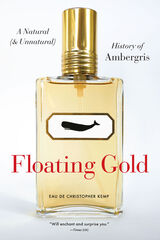 Floating Gold: A Natural (and Unnatural) History of Ambergris
Christopher Kemp
University of Chicago Press, 2012 A fascinating natural history of an incredibly curious substance.
“Preternaturally hardened whale dung” is not the first image that comes to mind when we think of perfume, otherwise a symbol of glamour and allure. But the key ingredient that makes the sophisticated scent linger on the skin is precisely this bizarre digestive by-product—ambergris. Despite being one of the world’s most expensive substances (its value is nearly that of gold and has at times in history been triple it), ambergris is also one of the world’s least known. But with this unusual and highly alluring book, Christopher Kemp promises to change that by uncovering the unique history of ambergris.
A rare secretion produced only by sperm whales, which have a fondness for squid but an inability to digest their beaks, ambergris is expelled at sea and floats on ocean currents for years, slowly transforming, before it sometimes washes ashore looking like a nondescript waxy pebble. It can appear almost anywhere but is found so rarely, it might as well appear nowhere. Kemp’s journey begins with an encounter on a New Zealand beach with a giant lump of faux ambergris—determined after much excitement to nothing more exotic than lard—that inspires a comprehensive quest to seek out ambergris and its story. He takes us from the wild, rocky New Zealand coastline to Stewart Island, a remote, windswept island in the southern seas, to Boston and Cape Cod, and back again. Along the way, he tracks down the secretive collectors and traders who populate the clandestine modern-day ambergris trade.
Floating Gold is an entertaining and lively history that covers not only these precious gray lumps and those who covet them, but presents a highly informative account of the natural history of whales, squid, ocean ecology, and even a history of the perfume industry. Kemp’s obsessive curiosity is infectious, and eager readers will feel as though they have stumbled upon a precious bounty of this intriguing substance.
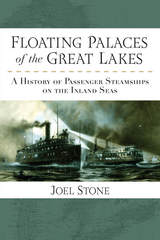 Floating Palaces of the Great Lakes: A History of Passenger Steamships on the Inland Seas
Joel Stone
University of Michigan Press, 2015 Through much of the nineteenth century, steam-powered ships provided one of the most reliable and comfortable transportation options in the United States, becoming a critical partner in railroad expansion and the heart of a thriving recreation industry. The aesthetic, structural, and commercial peak of the steamboat era occurred on the Great Lakes, where palatial ships created memories and livelihoods for millions while carrying passengers between the region’s major industrial ports of Chicago, Milwaukee, Detroit, Cleveland, Buffalo, and Toronto. By the mid-twentieth century, the industry was in steep decline, and today North America’s rich and entertaining steamboat heritage has been largely forgotten. In Floating Palaces of the Great Lakes, Joel Stone revisits this important era of maritime history, packed with elegance and adventure, politics and wealth, triumph and tragedy. This story of Great Lakes travelers and the beautiful floating palaces they engendered will engage historians and history buffs alike, as well as genealogists, regionalists, and researchers.
 Floating Power: Energy, Infrastructure, and South-South Relations
Gökçe Günel
Duke University Press, 2026 Floating Power considers the role of energy production on an international scale, challenging the idea that new infrastructures wholly replace older sources of energy. Shifting the discussion from energy transition to energy accumulation, Gökçe Günel engages with a range of electricity producers including hydroelectric, heavy fuel oil, natural gas, and solar power plants, noting their intersections as societies work to expand their supply at large rather than focus on one type of source. Günel uses the Ayşegül Sultan, a Turkish-built floating power plant in Ghana, as a prime example and vehicle to explore how state and corporate intervention impact energy technologies as every nation strives toward infrastructural expansion. Floating Power challenges the linear thinking and substitutive logic of mainstream energy discourse, instead showing how various power sources often expand and grow symbiotically.
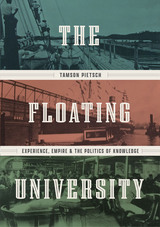 The Floating University: Experience, Empire, and the Politics of Knowledge
Tamson Pietsch
University of Chicago Press, 2023 The Floating University sheds light on a story of optimism and imperialist ambition in the 1920s.
In 1926, New York University professor James E. Lough—an educational reformer with big dreams—embarked on a bold experiment he called the Floating University. Lough believed that taking five hundred American college students around the globe by ship would not only make them better citizens of the world but would demonstrate a model for responsible and productive education amid the unprecedented dangers, new technologies, and social upheavals of the post–World War I world. But the Floating University’s maiden voyage was also its last: when the ship and its passengers returned home, the project was branded a failure—the antics of students in hotel bars and port city back alleys that received worldwide press coverage were judged incompatible with educational attainment, and Lough was fired and even put under investigation by the State Department.
In her new book, Tamson Pietsch excavates a rich and meaningful picture of Lough’s grand ambition, its origins, and how it reveals an early-twentieth-century America increasingly defined both by its imperialism and the professionalization of its higher education system. As Pietsch argues, this voyage—powered by an internationalist worldview—traced the expanding tentacles of US power, even as it tried to model a new kind of experiential education. She shows that this apparent educational failure actually exposes a much larger contest over what kind of knowledge should underpin university authority, one in which direct personal experience came into conflict with academic expertise. After a journey that included stops at nearly fifty international ports and visits with figures ranging from Mussolini to Gandhi, what the students aboard the Floating University brought home was not so much knowledge of the greater world as a demonstration of their nation’s rapidly growing imperial power.
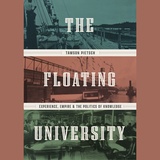 The Floating University: Experience, Empire, and the Politics of Knowledge
Tamson Pietsch
University of Chicago Press, 2023 This is an auto-narrated audiobook edition of this book. The Floating University sheds light on a story of optimism and imperialist ambition in the 1920s. In 1926, New York University professor James E. Lough—an educational reformer with big dreams—embarked on a bold experiment he called the Floating University. Lough believed that taking five hundred American college students around the globe by ship would not only make them better citizens of the world but would demonstrate a model for responsible and productive education amid the unprecedented dangers, new technologies, and social upheavals of the post–World War I world. But the Floating University’s maiden voyage was also its last: when the ship and its passengers returned home, the project was branded a failure—the antics of students in hotel bars and port city back alleys that received worldwide press coverage were judged incompatible with educational attainment, and Lough was fired and even put under investigation by the State Department. In her new book, Tamson Pietsch excavates a rich and meaningful picture of Lough’s grand ambition, its origins, and how it reveals an early-twentieth-century America increasingly defined both by its imperialism and the professionalization of its higher education system. As Pietsch argues, this voyage—powered by an internationalist worldview—traced the expanding tentacles of US power, even as it tried to model a new kind of experiential education. She shows that this apparent educational failure actually exposes a much larger contest over what kind of knowledge should underpin university authority, one in which direct personal experience came into conflict with academic expertise. After a journey that included stops at nearly fifty international ports and visits with figures ranging from Mussolini to Gandhi, what the students aboard the Floating University brought home was not so much knowledge of the greater world as a demonstration of their nation’s rapidly growing imperial power.
The Flock
Mary Austin
University of Nevada Press, 2001 This classic novel, first published in 1906 and based on Mary Austin's own experiences, captures the way of life of shepherds in the Sierra. Austin blends natural history, politics, and allegory in a genre-blurring narrative, championing local shepherds in their losing battle against the quickly developing tourist business in the Western Sierra during the nineteenth century. Austin had met many shepherds while visiting the Tejon ranches of Edward Beale and Henry Miller, and cultivated relationships with men others often thought of as ignorant, unambitious, and dirty, listening closely to their stories. Her neighbors were scandalized, but Austin respected the shepherds’ ways of thinking. Rather than portray these shepherds’ lives as part of a romantic bygone era, in this novel, she instead positions them as exemplifying potentially radical ways of living in and thinking about the world. Afterword by Barney Nelson.
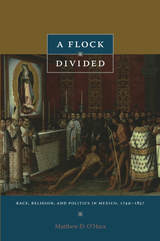 A Flock Divided: Race, Religion, and Politics in Mexico, 1749–1857
Matthew D. O Hara
Duke University Press, 2010 Catholicism, as it developed in colonial Mexico, helped to create a broad and remarkably inclusive community of Christian subjects, while it also divided that community into countless smaller flocks. Taking this contradiction as a starting point, Matthew D. O’Hara describes how religious thought and practice shaped Mexico’s popular politics. As he shows, religion facilitated the emergence of new social categories and modes of belonging in which individuals—initially subjects of the Spanish crown, but later citizens and other residents of republican Mexico—found both significant opportunities for improving their place in society and major constraints on their ways of thinking and behaving. O’Hara focuses on interactions between church authorities and parishioners from the late-colonial era into the early-national period, first in Mexico City and later in the surrounding countryside. Paying particular attention to disputes regarding caste status, the category of “Indian,” and the ownership of property, he demonstrates that religious collectivities from neighborhood parishes to informal devotions served as complex but effective means of political organization for plebeians and peasants. At the same time, longstanding religious practices and ideas made colonial social identities linger into the decades following independence, well after republican leaders formally abolished the caste system that classified individuals according to racial and ethnic criteria. These institutional and cultural legacies would be profound, since they raised fundamental questions about political inclusion and exclusion precisely when Mexico was trying to envision and realize new forms of political community. The modes of belonging and organizing created by colonialism provided openings for popular mobilization, but they were always stalked by their origins as tools of hierarchy and marginalization.
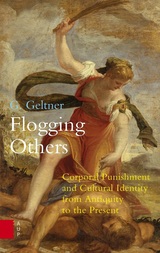 Flogging Others: Corporal Punishment and Cultural Identity from Antiquity to the Present
G. Geltner
Amsterdam University Press, 2015 Corporal punishment is often seen as a litmus test for a society's degree of civilization. Its licit use purports to separate modernity from premodernity, enlightened from barbaric cultures. As Geltner argues, however, neither did the infliction of bodily pain typify earlier societies nor did it vanish from penal theory, policy, or practice. Far from displaying a steady decline that accelerated with the Enlightenment, physical punishment was contested throughout Antiquity and the Middle Ages, its application expanding and contracting under diverse pressures. Moreover, despite the integration of penal incarceration into criminal justice systems since the nineteenth century, modern nation states and colonial regimes increased rather than limited the use of corporal punishment. Flogging Others thus challenges a common understanding of modernization and Western identity and underscores earlier civilizations' nuanced approaches to punishment, deviance, and the human body. Today as in the past, corporal punishment thrives due to its capacity to define otherness efficiently and unambiguously, either as a measure acting upon a deviant's body or as a practice that epitomizes - in the eyes of external observers - a culture's backwardness.
The Flood: A Novel
Carol Ascher
Northwestern University Press, 1997 Nine-year-old Eva Hoffman is the daughter of Austrian Jewish refugees who have found a precarious safety among a small community of European exiles attached to a psychoanalytic hospital in Topeka, Kansas. It is 1951, and the landmark school desegregation case, Brown v. Topeka Board of Education, is being tried in the local court. As the rising river inundates the town, the Hoffmans open their home to refugees from the flood, and Eva learns the complexities of prejudice—and courage—both within and outside her family.
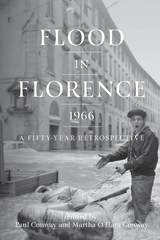 Flood in Florence, 1966: A Fifty-Year Retrospective
Paul Conway and Martha O’Hara Conway
Michigan Publishing, 2018 On November 4, 1966, the Arno River in Florence, Italy, flooded its banks, breaching the basements and first floors of museums, libraries, and private residences and burying centuries of books, manuscripts, and works of art in muck and muddy water. Flood in Florence, 1966documents a symposium held to mark the 50th anniversary of a natural disaster that served as an impetus for the modern library and museum conservation professions. The proceedings feature illustrated, first-person remembrances of the flood; papers on book conservation, the conservation of works of art, disaster preparedness and response, and the continuing needs for education and training; and a keynote that points toward a future where original artifacts and digital technologies intersect. Providing new insights on a touchstone event by three generations of preservation and conservation professionals, the proceedings deepen our understanding of major advances in conservation practice and shed light on some of the most important lessons from those advances for future generations and the digital age.
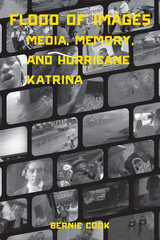 Flood of Images: Media, Memory, and Hurricane Katrina
By Bernie Cook
University of Texas Press, 2015 Anyone who was not in New Orleans during Hurricane Katrina and the subsequent flooding of the city experienced the disaster as a media event, a flood of images pouring across television and computer screens. The twenty-four-hour news cycle created a surplus of representation that overwhelmed viewers and complicated understandings of the storm, the flood, and the aftermath. As time passed, documentary and fictional filmmakers took up the challenge of explaining what had happened in New Orleans, reaching beyond news reports to portray the lived experiences of survivors of Katrina. But while these narratives presented alternative understandings and more opportunities for empathy than TV news, Katrina remained a mediated experience. In Flood of Images, Bernie Cook offers the most in-depth, wide-ranging, and carefully argued analysis of the mediation and meanings of Katrina. He engages in innovative, close, and comparative visual readings of news coverage on CNN, Fox News, and NBC; documentaries including Spike Lee’s When the Levees Broke and If God Is Willing and Da Creek Don’t Rise, Tia Lessin and Carl Deal’s Trouble the Water, and Dawn Logsdon and Lolis Elie’s Faubourg Treme; and the HBO drama Treme. Cook examines the production practices that shaped Katrina-as-media-event, exploring how those choices structured the possible memories and meanings of Katrina and how the media’s memory-making has been contested. In Flood of Images, Cook intervenes in the ongoing process of remembering and understanding Katrina.
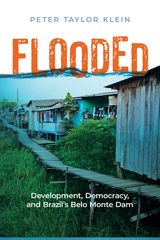 Flooded: Development, Democracy, and Brazil’s Belo Monte Dam
Peter Taylor Klein
Rutgers University Press, 2022 Winner of the 2023 Marysa Navarro Best Book Prize from the New England Council for Latin American studies
In the middle of the twentieth century, governments ignored the negative effects of large-scale infrastructure projects. In recent decades, many democratic countries have continued to use dams to promote growth, but have also introduced accompanying programs to alleviate these harmful consequences of dams for local people, to reduce poverty, and to promote participatory governance. This type of dam building undoubtedly represents a step forward in responsible governing. But have these policies really worked?
Flooded provides insights into the little-known effects of these approaches through a close examination of Brazil’s Belo Monte hydroelectric facility. After three decades of controversy over damming the Xingu River, a tributary of the Amazon, the dam was completed in 2019 under the left-of-center Workers’ Party, becoming the world’s fourth largest. Billions of dollars for social welfare programs accompanied construction. Nonetheless, the dam brought extensive social, political, and environmental upheaval to the region. The population soared, cost of living skyrocketed, violence spiked, pollution increased, and already overextended education and healthcare systems were strained. Nearly 40,000 people were displaced and ecosystems were significantly disrupted. Klein tells the stories of dam-affected communities, including activists, social movements, non-governmental organizations, and public defenders and public prosecutors. He details how these groups, as well as government officials and representatives from private companies, negotiated the upheaval through protests, participating in public forums for deliberation, using legal mechanisms to push for protections for the most vulnerable, and engaging in myriad other civic spaces. Flooded provides a rich ethnographic account of democracy and development in the making. In the midst of today’s climate crisis, this book showcases the challenges and opportunities of meeting increasing demands for energy in equitable ways.
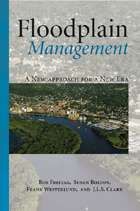 Floodplain Management: A New Approach for a New Era
Bob Freitag, Susan Bolton, Frank Westerlund, J.L.S. Clark
Island Press, 2009 Floodplain Management presents a compelling case for rethinking how we live with rivers in an era of rising flood risk. With flood damage in the U.S. now exceeding six billion dollars annually—and climate change expected to worsen the threat—this book offers practical, science-based strategies to reduce risk while working with, rather than against, natural river systems.
The authors argue that the most effective time to manage a flood is before it happens. Instead of relying solely on levees, dams, and other high-cost infrastructure, they outline a new paradigm that prioritizes long-term resilience and cost-efficiency. This approach blends ecological understanding with planning, policy, and design—encouraging communities to retreat from the most vulnerable zones, accommodate floodwaters through smart building practices, and protect vital assets using nonstructural or nature-based solutions whenever possible.
Drawing from current research in hydrology, river ecology, and climate science, Floodplain Management critiques outdated practices while offering clear alternatives that reflect how rivers truly function. The book gives readers a toolkit for anticipating flood behavior, minimizing damage, and making informed decisions about land use and development.
Ideal for planners, engineers, emergency managers, and policymakers, this is a timely and essential resource for adapting to a future where floods are not rare events—but expected challenges we can prepare for wisely.
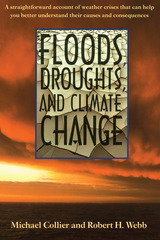 Floods, Droughts, and Climate Change
Michael Collier and Robert H. Webb
University of Arizona Press, 2002 No one in America would deny that the weather has changed drastically in our lifetime. We read about El Niño and La Niña, but how many of us really understand the big picture beyond our own front windows or even the headlines on the Weather Channel? Hydrologists and climatologists have long been aware of the role of regional climate in predicting floods and understanding droughts. But with our growing sense of a variable climate, it is important to reassess these natural disasters not as isolated events but as related phenomena.
This book shows that floods and droughts don't happen by accident but are the products of patterns of wind, temperature, and precipitation that produce meteorologic extremes. It introduces the mechanics of global weather, puts these processes into the longer-term framework of climate, and then explores the evolution of climatic patterns through time to show that floods and droughts, once considered isolated "acts of God," are often related events driven by the same forces that shape the entire atmosphere.
Michael Collier and Robert Webb offer a fresh, insightful look at what we know about floods, droughts, and climate variability—and their impact on people—in an easy-to-read text, with dramatic photos, that assumes no previous understanding of climate processes. They emphasize natural, long-term mechanisms of climate change, explaining how floods and droughts relate to climate variability over years and decades. They also show the human side of some of the most destructive weather disasters in history.
As Collier and Webb ably demonstrate, "climate" may not be the smooth continuum of meteorologic possibilities we supposed but rather the sum of multiple processes operating both regionally and globally on different time scales. Amid the highly politicized discussion of our changing environment, Floods, Droughts, and Climate Change offers a straightforward scientific account of weather crises that can help students and general readers better understand the causes of climate variability and the consequences for their lives.
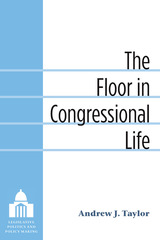 The Floor in Congressional Life
Andrew J. Taylor
University of Michigan Press, 2013 The House and the Senate floors are the only legislative forums where all members of the U.S. Congress participate and each has a vote. Andrew J. Taylor explores why floor power and floor rights in the House are more restricted than in the Senate and how these restrictions affect the legislative process. After tracing the historical development of floor rules, Taylor assesses how well they facilitate a democratic legislative process---that is, how well they facilitate deliberation, transparency, and widespread participation. Taylor not only compares floor proceedings between the Senate and the House in recent decades; he also compares recent congressional proceedings with antebellum proceedings. This unique, systematic analysis reveals that the Senate is generally more democratic than the House---a somewhat surprising result, given that the House is usually considered the more representative and responsive of the two. Taylor concludes with recommendations for practical reforms designed to make floor debates more robust and foster representative democracy.
Flora of Iraq Volume 6: Compositae
Edited by Shahina A. Ghazanfar, John R. Edmondson, D. J. Nicholas Hind
Royal Botanic Gardens, Kew, 2019 The Flora of Iraq is the only flora for this region in the Middle East. It enables anyone documenting, studying, or managing Iraq’s vast and rich flora to identify the vascular cryptograms and flowering plants. In addition to the detailed taxonomic information, a large amount of supplementary data of general biological interest and economic interest is provided, as well as notes on vernacular names. Nearing completion, it fills a major gap in the floral knowledge of Iraq. Volume 6 covers the Compositae in its entirety.
Flora of Iraq Volume 7: Solanaceae to Biebersteiniaceae
Edited by Shahina Ghazanfar, John Edmondson, and Ali Haboob
Royal Botanic Gardens, Kew, 2025 The authoritative flora for Iraq, featuring detailed plant descriptions and botanical illustrations to aid identification.
The Flora of Iraq is the only flora for this region in the Middle East. It enables anyone documenting, studying, or managing Iraq’s vast and rich flora to identify the vascular cryptograms and flowering plants. In addition to the detailed taxonomic information, a large amount of supplementary data of general biological interest and economic interest is provided, as well as notes on vernacular names. Nearing completion, the series fills a major gap in the floral knowledge of Iraq.
Flora of Iraq Volume Five Part One: Elatinaceae to Sphenocleaceae
Edited by Shahina A. Ghazanfar
Royal Botanic Gardens, Kew, 2015 The Flora of Iraq is the only botanical guide for this region in the Middle East. It enables anyone documenting, studying, or managing Iraq’s vast and rich flora to identify the area’s vascular cryptogams (plants that do not make seeds) as well as its flowering plants. In addition to detailed taxonomic information, a large amount of supplementary data of general biological and economic interest is provided, as well as notes on vernacular names. Rounding out a series decades in the making, it is a vital contribution to our floral knowledge of Iraq.
Flora of Iraq, Volume Five, Part Two: Lythraceae to Campanulaceae
Edited by Shahina A. Ghazanfar and John R. Edmondson
Royal Botanic Gardens, Kew, 2014 The Flora of Iraq is the only comprehensive reference for this region in the Middle East. It enables anyone documenting, studying, or managing Iraq’s vast and rich flora to identify the vascular cryptograms and flowering plants. In addition to detailed taxonomic information, it includes general biological and economic data, as well as notes on vernacular names. As this collection nears completion, it fills a major gap in the floral knowledge of Iraq. Plant families included in Volume 5, Part 2 are Lythraceae, Onagraceae, Haloragaceae, Gentianaceae, Menyanthaceae, Primulaceae, Plumbaginaceae, Plantaginaceae, Crassulaceae, Saxifragaceae, Vahliaceae, Umbelliferae, Valerianaceae, Dipsaceae, and Campanulaceae.
A Flora of Northeastern Minnesota
Olga Lakela
University of Minnesota Press, 1965 A Flora of Northeastern Minnesota was first published in 1965. Minnesota Archive Editions uses digital technology to make long-unavailable books once again accessible, and are published unaltered from the original University of Minnesota Press editions. A manual for the identification of the ferns, fern allies, flowering plants, trees, shrubs, and herbs of Minnesota's Arrowhead region, this volume lists 113 botanic families and describes 1,300 species, with keys for identification. There are 80 line drawings of plant species and 419 maps showing distribution.
A Flora of Southern Illinois
Robert H. Mohlenbrock
Southern Illinois University Press, 1974 This book will be of particular interest to those interested in applied fields of biology, such as conservation, forestry, and wild life. The southern twelve counties of Illinois, a total of 4,355square miles, comprise the area covered in this book. It is an area in which both northern and southern flora specimens abound. A wide variety of plant species grow in this area, and nearly 200 new plants not formerly identified with this area have been included in the listings. Especially valuable to amateur botanists, the book is an important manual in identifying the plants that make up the native scenery of this region. Seventy-seven illustrations aid in identifying and understanding the plant communities.
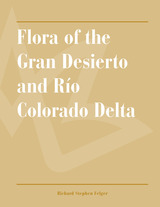 Flora of the Gran Desierto and Río Colorado Delta
Richard Stephen Felger
University of Arizona Press, 2001 From the Pinacate lava fields and expansive dunes to the shores of the Gulf of California, the Gran Desierto is one of the hottest and driest places in the Western Hemisphere. Yet this region in the state of Sonora in northwestern Mexico embraces a remarkable number of habitats with a fascinating and surprisingly rich flora. This is the heart of the Sonoran Desert, still in a largely primordial state, in juxtaposition with the ravished wetlands of the once great Río Colorado. Flora of the Gran Desierto is the culmination of more than twenty-five years of research in this magnificent desert and delta by botanist Richard Felger. This comprehensive floristic study of more than 565 species of vascular plants features original diagnostic descriptions and innovative identification keys to the families, genera, and species. Particular attention has been devoted to taxa that are poorly known. Even weeds and their histories are treated in detail. Hundreds of illustrations by such eminent botanical artists as Lucretia Brezeale Hamilton, Matt Johnson, and Bobbi Angell will aid in the identification of plants.
Common names of plants are given in English, Spanish, and O'odham. While emphasizing scientific accuracy, the book is written in an accessible style. Felger's observations and knowledge of plant ecology, geographic distribution, evolution, ethnobotany, plant variation and special adaptations, and the history of the region provides botanists, naturalists, ecologists, conservationists, and anyone else celebrating the desert with readable, interesting, and important information. With two of Mexico's newest biosphere reserves—the Pinacate and the Upper Gulf of California—this region is a keystone for desert conservation efforts. Its location linking vast preserves to the north makes this book especially useful for anyone interested in borderland studies and the Sonoran Desert. Flora of the Gran Desierto represents a most creative, definitive, and enthusiastic treatment of Sonoran Desert plant life and is highly relevant to ecological restoration in deserts and wetlands in arid places worldwide.
Flora of the Guianas Series A: Meliaceae
Edited by Sylvia Mota de Oliveira
Royal Botanic Gardens, Kew, 2016 A critical, illustrated look at the flora of Guyana, Suriname, and French Guiana, designed to treat phanerogams as well as cryptogams of the area. This edition covers the Meliaceae family, and provides plant descriptions, distribution, and taxonomic keys.
Flora of the Guianas. Series A: Phanerogams Fascicle 23
M. J. Jansen-Jacobs
Royal Botanic Gardens, Kew, 2006 A descriptive account of the flowering plants and ferns native and naturalised in Kenya, Tanzania and Uganda, together with information on exotic ornamental and crop plants. Prepared at the Royal Botanic Gardens, Kew in co-operation with the East African Herbarium, the National Herbarium of Tanzania, and the Herbaria of Makerere University and Dar es Salaam University.
Flora of the Guianas. Series A: Phanerogams Fascicle 24
M. J. Jansen-Jacobs
Royal Botanic Gardens, Kew, 2007 A critical, illustrated Flora of Guyana, Suriname and French Guiana, designed to treat phanerogams as well as cryptogams of the area. Publication takes place in fascicles, each treating a family or group of related families. Treatments provide fundamental and applied information, covering, when possible, wood anatomy, chemical analysis, economic uses, vernacular names and data on endangered species.
Flora of the Guianas. Series A: Phanerogams Fascicle 26
Edited by M.J. Jansen-Jacobs
Royal Botanic Gardens, Kew, 2008 A contribution to the Flora of the Guianas series from the Royal Botanic Gardens, Kew.
A critical, illustrated Flora of Guyana, Suriname and French Guiana, designed to treat phanerogams as well as cryptogams of the area.
Flora of the Guianas Series A: Phanerogams Fascicle 27: 71. Cyrillaceae, 79. Theophrastaceae, 86. Habdodendraceae, 90. Proteaceae, 100. Combretaceae, 113. Dichapetalaceae, 167. Limnocharitaceae, 168. Alismataceae
Edited by M.J. Jansen-Jacobs
Royal Botanic Gardens, Kew, 2009 Descriptions and illustrations of species in the following families:-
71. Cyrillaceae, 79. Theophrastaceae, 86. Habdodendraceae, 90. Proteaceae, 100. Combretaceae, 113. Dichapetalaceae 167. Limnochoaritaceae, 168. Alismataceae
Flora of the Guianas Series A: Phanerogams Fascicle 28: Leguminosae Subfamily 87. Mimosoideae.
Edited by M. J. Jansen-Jacobs
Royal Botanic Gardens, Kew, 2011 A critical, illustrated Flora of Guyana, Suriname and French Guiana, designed to treat phanerogams as well as cryptogams of the area. Publication takes place in fascicles, each treating a family or group of related families. Treatments provide fundamental and applied information, covering, when possible, wood anatomy, chemical analysis, economic uses, vernacular names and data on endangered species.
Flora of the Guianas Series A: Phanerogams Fascicle 29: 127 Sapindaceae
Edited by Sylvia Mota de Oliveira
Royal Botanic Gardens, Kew, 2013 A critical, illustrated look at the flora of Guyana, Suriname, and French Guiana, designed to treat phanerogams as well as cryptogams of the area. This edition covers the Sapindaceae family, and provides plant descriptions, distribution, and taxonomic keys.
Flora of the Guianas: Series A: Phanerogams Fascicle 30: 139 Gentianaceae
Edited by Sylvia Mota de Oliveira
Royal Botanic Gardens, Kew, 2014 The Gentianaceae family is wildly diverse, with members ranging from annual and perennial herbs, to shrubs, to tropical trees and woody lianes. Their wide range means that many species of Gentiana are popular in gardens, especially those cultivated as rock garden or herbaceous border perennials. Flora of the Guianas Gentianaceae takes a critical, illustrated look at this family as it appears in Guyana, Suriname, and French Guiana. The volume includes species descriptions, distribution, habitat, and vernacular names, as well as line drawings throughout.
Flora of the Guianas Series C: Bryophytes Fascicle 2
Edited by M. J. Jansen-Jacobs
Royal Botanic Gardens, Kew, 2011 A critical, illustrated Flora of Guyana, Suriname and French Guiana, designed to treat phanerogams as well as cryptogams of the area. Each fascicle treats a family or group of related families, providing fundamental and applied information, covering, where relevant, wood anatomy, chemical analysis, economic uses, vernacular names and data on endangered species.
Flora of the Guianas Series E (Fungi and Lichens): Cladoniaceae
Edited by Sylvia Mota de Oliveira
Royal Botanic Gardens, Kew, 2014 A critical, illustrated look at the flora of Guyana, Suriname, and French Guiana, designed to treat phanerogams as well as cryptogams of the area. This edition covers the Cladoniaceae family, and provides plant descriptions, distribution, and taxonomic keys.
Flora of Tropical East Africa: Acanthaceae II
Edited by H. J. Beentje and S. A. Ghazanfar
Royal Botanic Gardens, Kew, 2010 A descriptive account of the flowering plants and ferns native and naturalized in Kenya, Tanzania, and Uganda, together with information on exotic ornamental and crop plants. At least one species per genus is illustrated, and the bibliography and synonymy are sufficiently detailed to explain the nomenclature and taxonomic circumscriptions within a broad regional context. The Flora is a part work published in fascicles (paperback).
Flora of Tropical East Africa: Acanthaceae Part 1
H. J. Beentje
Royal Botanic Gardens, Kew, 2000 A descriptive account of the flowering plants and ferns native and naturalised in Kenya, Tanzania and Uganda, together with information on exotic ornamental and crop plants. Prepared at the Royal Botanic Gardens, Kew in co-operation with the East African Herbarium, the National Herbarium of Tanzania, and the Herbaria of Makerere University and Dar es Salaam University.
Flora of Tropical East Africa: Apocynaceae II
Edited by Henk J. Beentje
Royal Botanic Gardens, Kew, 2012 The Flora of Tropical East Africa is a descriptive, extensively illustrated account of the flowering plants and ferns native and naturalized in Kenya, Tanzania, and Uganda, together with information on exotic ornamental and crop plants. At least one species of each genus is illustrated, and the bibliography and synonymy are sufficiently detailed to explain the nomenclature and taxonomic circumscriptions within a broad regional context. This part of the series is the second volume devoted to the Apocynaceae family or dogbane, which includes trees, shrubs, herbs, and lianas.
Flora of Tropical East Africa: Asparagaceae
Sebsebe Demissew
Royal Botanic Gardens, Kew, 2006 Being a descriptive account of the flowering plants and ferns native and naturalised in Kenya, Tanzania and Uganda, together with information on exotic ornamental and crop plants.
Prepared at the Royal Botanic Gardens, Kew in co-operation with the East African Herbarium, the National Herbarium of Tanzania, and the Herbaria of Makerere University and Dar es Salaam University.
Flora of Tropical East Africa: Aspleniaceae
Kew Publishing
Royal Botanic Gardens, Kew, 2008 Being a descriptive account of the flowering plants and ferns native and naturalised in Kenya, Tanzania and Uganda, together with information on exotic ornamental and crop plants.
Prepared at the Royal Botanic Gardens, Kew in co-operation with the East African Herbarium, the National Herbarium of Tanzania, and the Herbaria of Makerere University and Dar es Salaam University.
Flora of Tropical East Africa: Blechnaceae
H. J. Beentje
Royal Botanic Gardens, Kew, 2006 Being a descriptive account of the flowering plants and ferns native and naturalised in Kenya, Tanzania and Uganda, together with information on exotic ornamental and crop plants.
Prepared at the Royal Botanic Gardens, Kew in co-operation with the East African Herbarium, the National Herbarium of Tanzania, and the Herbaria of Makerere University and Dar es Salaam University.
Flora of Tropical East Africa: Colchicaceae
H. J. Beentje
Royal Botanic Gardens, Kew, 2005 Being a descriptive account of the flowering plants and ferns native and naturalised in Kenya, Tanzania and Uganda, together with information on exotic ornamental and crop plants.
Prepared at the Royal Botanic Gardens, Kew in co-operation with the East African Herbarium, the National Herbarium of Tanzania, and the Herbaria of Makerere University and Dar es Salaam University.
Flora of Tropical East Africa: Commelinaceae
Edited by Henk Beentje
Royal Botanic Gardens, Kew, 2012 The Flora of Tropical East Africa is a descriptive, extensively illustrated account of the flowering plants and ferns native and naturalized in Kenya, Tanzania and Uganda, together with information on exotic ornamental and crop plants. At least one species of each genus is illustrated, and the bibliography and synonymy are sufficiently detailed to explain the nomenclature and taxonomic circumscriptions within a broad regional context. This part covers the Commelinaceae family.
Flora of Tropical East Africa: Compositae (Part 3)
H. J. Beentje
Royal Botanic Gardens, Kew, 2005 Being a descriptive account of the flowering plants and ferns native and naturalised in Kenya, Tanzania and Uganda, together with information on exotic ornamental and crop plants.
Prepared at the Royal Botanic Gardens, Kew in co-operation with the East African Herbarium, the National Herbarium of Tanzania, and the Herbaria of Makerere University and Dar es Salaam University.
Flora of Tropical East Africa: Cyatheaceae
H. J. Beentje
Royal Botanic Gardens, Kew, 2005 Being a descriptive account of the flowering plants and ferns native and naturalised in Kenya, Tanzania and Uganda, together with information on exotic ornamental and crop plants.
Prepared at the Royal Botanic Gardens, Kew in co-operation with the East African Herbarium, the National Herbarium of Tanzania, and the Herbaria of Makerere University and Dar es Salaam University.
Flora of Tropical East Africa: Cyperaceae
Edited by H. J. Beentje and S. A. Ghazanfar
Royal Botanic Gardens, Kew, 2010 The Flora of Tropical East Africa is a descriptive, extensively illustrated account of the flowering plants and ferns native and naturalized in Kenya, Tanzania and Uganda, together with information on exotic ornamental and crop plants. At least one species of each genus is illustrated with a fully annotated, and the bibliography and synonymy are sufficiently detailed to explain the nomenclature and taxonomic circumscriptions within a broad regional context.
This part is devoted to the substantial family of Cyperaceae - or sedges.
Flora of Tropical East Africa: Dracaenaceae
Edited by H.J. Beentje and S.A. Ghazanfar
Royal Botanic Gardens, Kew, 2007 Being a descriptive account of the flowering plants and ferns native and naturalised in Kenya, Tanzania and Uganda, together with information on exotic ornamental and crop plants.
Prepared at the Royal Botanic Gardens, Kew in co-operation with the East African Herbarium, the National Herbarium of Tanzania, and the Herbaria of Makerere University and Dar es Salaam University.
Flora of Tropical East Africa: Hymenophyllaceae
H. J. Beentje and S. A. Ghazanfar
Royal Botanic Gardens, Kew, 2000 A descriptive account of the flowering plants and ferns native and naturalised in Kenya, Tanzania and Uganda, together with information on exotic ornamental and crop plants. Prepared at the Royal Botanic Gardens, Kew in co-operation with the East African Herbarium, the National Herbarium of Tanzania, and the Herbaria of Makerere University and Dar es Salaam University.
Flora of Tropical East Africa: Lamiaceae (Labiatae)
Edited by H.J. Beentje and S.A. Ghazanfar
Royal Botanic Gardens, Kew, 2010 Being a descriptive account of the flowering plants and ferns native and naturalised in Kenya, Tanzania and Uganda, together with information on exotic ornamental and crop plants.
Prepared at the Royal Botanic Gardens, Kew in co-operation with the East African Herbarium, the National Herbarium of Tanzania, and the Herbaria of Makerere University and Dar es Salaam University.
Flora of Tropical East Africa: Malvaceae
Edited by H.J. Beentje and S.A. Ghazanfar
Royal Botanic Gardens, Kew, 2010 A descriptive account of the flowering plants and ferns native and naturalised in Kenya, Tanzania and Uganda, together with information on exotic ornamental and crop plants. At least one species in each genus is illustrated, and the bibliography and synonymy are sufficiently detailed to explain nomenclature and taxonomic circumscriptions within a broad regional context. The Flora is a part work published in paperback fascicles.
The 'Malvaceae' includes the genera Pavonia, Hibiscus and Abutilon.
Flora of Tropical East Africa: Ochnaceae
H. J. Beentje
Royal Botanic Gardens, Kew, 2000 A descriptive account of the flowering plants and ferns native and naturalised in Kenya, Tanzania and Uganda, together with information on exotic ornamental and crop plants. Prepared at the Royal Botanic Gardens, Kew in co-operation with the East African Herbarium, the National Herbarium of Tanzania, and the Herbaria of Makerere University and Dar es Salaam University.
Flora of Tropical East Africa: Scrophulariaceae
H. J. Beentje
Royal Botanic Gardens, Kew, 2008 Being a descriptive account of the flowering plants and ferns native and naturalised in Kenya, Tanzania and Uganda, together with information on exotic ornamental and crop plants.
Prepared at the Royal Botanic Gardens, Kew in co-operation with the East African Herbarium, the National Herbarium of Tanzania, and the Herbaria of Makerere University and Dar es Salaam University.
Flora of Tropical East Africa: Solanaceae
Edited by Henk J. Beentje
Royal Botanic Gardens, Kew, 2012 The Flora of Tropical East Africa is a descriptive, extensively illustrated account of the flowering plants and ferns native and naturalized in Kenya, Tanzania, and Uganda, together with information on exotic ornamental and crop plants. At least one species of each genus is illustrated, and the bibliography and synonymy are sufficiently detailed to explain the nomenclature and taxonomic circumscriptions within a broad regional context. This part of the series is devoted to the Solanaceae or nightshade family, which includes both important agricultural crops as well as a number of toxic plants.
Flora Zambesiaca Compositae 6 (4)
Edited by Benoit Loeuille
Royal Botanic Gardens, Kew, 2025 The authority on the flora of this region, featuring detailed plant descriptions and botanical illustrations to aid identification.
The Flora Zambesiaca series provides comprehensive descriptive accounts of the flowering plants and ferns native and naturalized in Zambia, Malawi, Mozambique, Zimbabwe, Botswana, and the Caprivi Strip.
Flora Zambesiaca Compositae 6(5)
D. J. Nicholas Hind
Royal Botanic Gardens, Kew, 2024 An authoritative account of Compositae.
The Flora Zambesiaca series provides comprehensive descriptive accounts of the flowering plants and ferns native and naturalized in Zambia, Malawi, Mozambique, Zimbabwe, Botswana, and the Caprivi Strip. Volume 6 (5) covers part of Compositae, including detailed plant descriptions and botanical illustrations to aid identification.
Flora Zambesiaca Volume 12 Part 1: Araceae (Including Lemnaceae)
Edited by J. R. Timberlake and E. S. Martins
Royal Botanic Gardens, Kew, 2012 The Flora Zambesiaca series provides comprehensive descriptive accounts of the flowering plants and ferns native and naturalised in Zambia, Malawi, Mozambique, Zimbabwe, Botswana and the Caprivi Strip.
Published in paperback following a modified Bentham & Hooker system, as parts or as whole volumes as and when they are complete.
Flora Zambesiaca Volume 12 Part 2: Dioscoreaceae, Taccaceae, Burmanniaceae, Pandanaceae, Velloziaceae, Colchicaceae, Liliaceae, Smilacaceae
Edited by Jonathan Timberlake
Royal Botanic Gardens, Kew, 2009 Flora Zambesiaca Volume 12 Part 2 - comprising:-
Alismataceae, Limnocharitaceae, Hydrocharitaceae, Najadaceae, Aponogetonaceae, Juncaginaceae, Potamogetonaceae, Zosteraceae, Zannichelliaceae, Cymodoceaceae, Dioscoreaceae, Burmanniaceae, Pandanaceae, Velloziaceae, Colchicaceae, Liliaceae, Smilacaceae.
Flora Zambesiaca Volume 13 (3) Hyancinthaceae
Edited by Benoit Loeuille
Royal Botanic Gardens, Kew, 2023 An authoritative account of Hyancinthaceae.
The Flora Zambesiaca series provides comprehensive descriptive accounts of the flowering plants and ferns native and naturalized in Zambia, Malawi, Mozambique, Zimbabwe, Botswana, and the Caprivi Strip. Volume 14 covers the Hyancinthaceae in its entirety, including detailed plant descriptions and botanical illustrations to aid identification.
Flora Zambesiaca Volume 13 Part 1
Edited by J. R. Timberlake
Royal Botanic Gardens, Kew, 2008 Newly published volume in the acclaimed Flora Zambesiaca series. This part covers the families Asparagaceae, Behniaceae, Agavaceae, Anthericaceae, Alliaceae, Agapanthaceae and Amaryllidaceae.
Flora Zambesiaca Volume 13 Part 2: : Eriospermaceae, Dracaenaceae, Arecaceae (Palmae), Pontederiaceae, Bromeliaceae, Mayacaceae
Edited by Jonathan Timberlake
Royal Botanic Gardens, Kew, 2011 The Flora Zambesiaca series provides comprehensive descriptive accounts of the flowering plants and ferns native and naturalised in Zambia, Malawi, Mozambique, Zimbabwe, Botswana and the Caprivi Strip.
This part covers the families:-
Eriospermaceae, Dracaenaceae, Arecaceae (Palmae), Pontederiaceae, Bromeliaceae, Mayacaceae.
Flora Zambesiaca Volume 13 Part 4: Xyridaceae, Eriocaulaceae, Typhaceae, Restionaceae, Flagellariaceae, Juncaceae, Musaceae, Strelitziaceae, Costaceae, Zingiberaceae, Cannaceae, Marantaceae
Edited by Jonathan Timberlake
Royal Botanic Gardens, Kew, 2010 The Flora Zambesiaca series provides comprehensive descriptive accounts of the flowering plants and ferns native and naturalised in Zambia, Malawi, Mozambique, Zimbabwe, Botswana and the Caprivi Strip.
This volume covers Xyridaceae, Eriocaulaceae, Typhaceae, Restionaceae, Flagellariaceae, Juncaceae, Musaceae, Strelitziaceae, Costaceae, Zingiberaceae, Cannaceae, Marantaceae.
Flora Zambesiaca Volume 14 Part 1: Cyperaceae
Edited by Miguel A. Garcia and Jonathan R. Timberlake
Royal Botanic Gardens, Kew, 2020 The Flora Zambesiaca series provides comprehensive descriptive accounts of the flowering plants and ferns native and naturalized in Zambia, Malawi, Mozambique, Zimbabwe, Botswana, and the Caprivi Strip. This volume will cover the Cyperaceae in its entirety.
Flora Zambesiaca Volume 3 Part 2
Edited by J. R. Timberlake, G.V. Pope, R.M. Polehill, and E.S. Martin
Royal Botanic Gardens, Kew, 2007 Leguminosae subfamily Caesalpinioideae.
Flora Zambesiaca Volume 3 Part 4: Papilionoideae: Indigofereae
Edited by J. R. Timberlake and E. S. Martins
Royal Botanic Gardens, Kew, 2013 The Flora Zambesiaca series, published in over 200 parts, provides comprehensive descriptive accounts of the flowering plants and ferns native and naturalized in Zambia, Malawi, Mozambique, Zimbabwe, Botswana and the Caprivi Strip. Meticulous botanical illustrations illustrate an example of each genera. This is an essential tool for ecological surveys, as no other publication provides the depth and scope.
Flora Zambesiaca Volume 7 Part 2: Apocynaceae
Edited by Miguel A. Garcia
Royal Botanic Gardens, Kew, 2020 The Flora Zambesiaca series provides comprehensive descriptive accounts of the flowering plants and ferns native and naturalized in Zambia, Malawi, Mozambique, Zimbabwe, Botswana, and the Caprivi Strip. Volume 7 Part 3 completes the Apocynaceae in its entirety.
Flora Zambesiaca Volume 8 Part 5: Acanthaceae: Pseudocalyx to Crossandra
Edited by J. R. Timberlake and E. S. Martins
Royal Botanic Gardens, Kew, 2013 The Flora Zambesiaca series, published in over 200 parts, provides comprehensive descriptive accounts of the flowering plants and ferns native and naturalized in Zambia, Malawi, Mozambique, Zimbabwe, Botswana and the Caprivi Strip. Meticulous botanical illustrations illustrate an example of each genera. This is an essential tool for ecological surveys, as no other publication provides the depth and scope.
Flora Zambesiaca: Volume 8, Part 6: Acanthaceae: Barleria to Hypoestes
Edited by J. R. Timberlake
Royal Botanic Gardens, Kew, 2014 The Flora Zambesiaca series, published in over 200 parts, provides comprehensive descriptive accounts of the flowering plants and ferns native and naturalized in Zambia, Malawi, Mozambique, Zimbabwe, Botswana and the Caprivi Strip. Meticulous botanical illustrations illustrate an example of each genera. An essential tool for ecological surveys, as no other publication provides the depth and scope.
Volume 8 part 6 covers the Acanthaceae family, from Barleria to Hypoestes.
Flora Zambesiaca Volume 8 Part 8: Labiatae, Pogostemonoideae to Nepetoideae Tribe Mentheae
Edited by J. R. Timberlake and E. S. Martins
Royal Botanic Gardens, Kew, 2013 The Flora Zambesiaca series, published in more than two hundred parts, provides comprehensive descriptive accounts of the flowering plants and ferns native and naturalized in Zambia, Malawi, Mozambique, Zimbabwe, Botswana, and the Caprivi Strip. Meticulous botanical illustrations illustrate an example of each genera. An essential tool for ecological surveys, as no other publication provides the depth and scope.
Published in paperback following a modified Bentham & Hooker system, as parts or as whole volumes as and when they are complete.
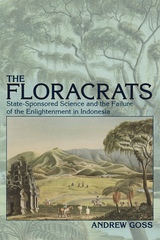 The Floracrats: State-Sponsored Science and the Failure of the Enlightenment in Indonesia
Andrew Goss
University of Wisconsin Press, 2011 Situated along the line that divides the rich ecologies of Asia and Australia, the Indonesian archipelago is a hotbed for scientific exploration, and scientists from around the world have made key discoveries there. But why do the names of Indonesia’s own scientists rarely appear in the annals of scientific history? In The Floracrats Andrew Goss examines the professional lives of Indonesian naturalists and biologists, to show what happens to science when a powerful state becomes its greatest, and indeed only, patron.
With only one purse to pay for research, Indonesia’s scientists followed a state agenda focused mainly on exploiting the country’s most valuable natural resources—above all its major export crops: quinine, sugar, coffee, tea, rubber, and indigo. The result was a class of botanic bureaucrats that Goss dubs the “floracrats.” Drawing on archives and oral histories, he shows how these scientists strove for the Enlightenment ideal of objective, universal, and useful knowledge, even as they betrayed that ideal by failing to share scientific knowledge with the general public. With each chapter, Goss details the phases of power and the personalities in Indonesia that have struggled with this dilemma, from the early colonial era, through independence, to the modern Indonesian state. Goss shows just how limiting dependence on an all-powerful state can be for a scientific community, no matter how idealistic its individual scientists may be.
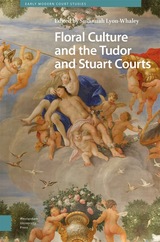 Floral Culture and the Tudor and Stuart Courts
Susannah Lyon-Whaley
Amsterdam University Press, 2024 At court, flowers coloured, scented, adorned, sustained, nourished, and enthralled. These interdisciplinary essays engage with flowers as real, artificial, and represented objects across the Tudor and Stuart courts in gardens, literature, painting, interior furnishing, garments, and as jewels, medicine, and food. Situating this burgeoning floral culture within a European floral revolution of science, natural history, global trade, and colonial expansion, they reveal the court’s distinctive floral identity and history. If the rose operated as a particularly English lingua franca of royal power across two dynasties, this volume sheds light on an array of wild and garden flowers to offer an immersive picture of how the Tudor and Stuart courts lived and functioned, styled and displayed themselves through flowers. It contributes to a revival of interest in the early modern green world and provides a focused view of a court and court culture that used and revelled in blooms.
Flore Générique des Arbres de Madagascar
George E. Schatz
Royal Botanic Gardens, Kew, 2001 This is a practical field manual for the identification of the 500 genera of native and naturalized Malagasy trees. Identification keys emphasise vegetative and gross morphological features. All genera are provided with full descriptions, distribution information, key characteristics, up-to-date taxonomic references and over 3,000 Malagasy vernacular names and almost all are illustrated. The French-language edition.
Florence: A Portrait
Michael Levey
Harvard University Press, 1996 Nestled in the Apennines, cradle of the Renaissance, home of Dante, Michelangelo, and the Medici, Florence is unlike any other city in its extraordinary mingling of great art and literature, natural splendor, and remarkable history. Intimate and grand, learned and engaging, Michael Levey's Florence renders the city in all of its madness and magnificence.
 Florence and Baghdad: Renaissance Art and Arab Science
Hans Belting
Harvard University Press, 2011 The use of perspective in Renaissance painting caused a revolution in the history of seeing, allowing artists to depict the world from a spectator’s point of view. But the theory of perspective that changed the course of Western art originated elsewhere—it was formulated in Baghdad by the eleventh-century mathematician Ibn al Haithan, known in the West as Alhazen. Using the metaphor of the mutual gaze, or exchanged glances, Hans Belting—preeminent historian and theorist of medieval, Renaissance, and contemporary art—narrates the historical encounter between science and art, between Arab Baghdad and Renaissance Florence, that has had a lasting effect on the culture of the West.
In this lavishly illustrated study, Belting deals with the double history of perspective, as a visual theory based on geometrical abstraction (in the Middle East) and as pictorial theory (in Europe). How could geometrical abstraction be reconceived as a theory for making pictures? During the Middle Ages, Arab mathematics, free from religious discourse, gave rise to a theory of perspective that, later in the West, was transformed into art when European painters adopted the human gaze as their focal point. In the Islamic world, where theology and the visual arts remained closely intertwined, the science of perspective did not become the cornerstone of Islamic art. Florence and Baghdad addresses a provocative question that reaches beyond the realm of aesthetics and mathematics: What happens when Muslims and Christians look upon each other and find their way of viewing the world transformed as a result?
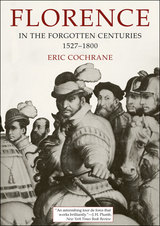 Florence in the Forgotten Centuries, 1527-1800: A History of Florence and the Florentines in the Age of the Grand Dukes
Eric Cochrane
University of Chicago Press, 1976 The city of Florence has long been admired as the home of the brilliant artistic and literary achievement of the early Renaissance. But most histories of Florence go no further than the first decades of the sixteenth century. They thus give the impression that Florentine culture suddenly died with the generation of Leonardo, Machiavelli, and Andrea del Sarto.
Eric Cochrane shows that the Florentines maintained their creativity long after they had lost their position as the cultural leaders of Europe. When their political philosophy and historiography ran dry, they turned to the practical problems of civil administration. When their artists finally yielded to outside influence, they turned to music and the natural sciences. Even during the darkest days of the great economic depression of the late seventeenth and early eighteenth centuries, they succeeded in preserving—almost alone in Europe—the blessings of external peace and domestic tranquility.
A Florentine Chansonnier from the Time of Lorenzo the Magnificent
Edited by Howard M. Brown
University of Chicago Press, 1983 "Demonstrates the clarity of [Brown's] editorial technique, his thoroughly impressive control of the sources, his exhaustive knowledge of the repertory, and his penetrating stylistic insight. It is a summation of his quarter century of scholarship."—Journal of the American Musicological Society
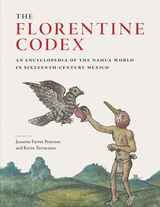 The Florentine Codex: An Encyclopedia of the Nahua World in Sixteenth-Century Mexico
Edited by Jeanette Favrot Peterson and Kevin Terraciano
University of Texas Press, 2019 Honorable Mention, 2021 LASA Mexico Humanities Book Prize, Latin American Studies Association, Mexico Section In the sixteenth century, the Franciscan friar Bernardino de Sahagún and a team of indigenous grammarians, scribes, and painters completed decades of work on an extraordinary encyclopedic project titled General History of the Things of New Spain, known as the Florentine Codex (1575–1577). Now housed in the Biblioteca Medicea Laurenziana in Florence and bound in three lavishly illustrated volumes, the codex is a remarkable product of cultural exchange in the early Americas. In this edited volume, experts from multiple disciplines analyze the manuscript’s bilingual texts and more than 2,000 painted images and offer fascinating, new insights on its twelve books. The contributors examine the “three texts” of the codex—the original Nahuatl, its translation into Spanish, and its painted images. Together, these constitute complementary, as well as conflicting, voices of an extended dialogue that occurred in and around Mexico City. The volume chapters address a range of subjects, from Nahua sacred beliefs, moral discourse, and natural history to the Florentine artists’ models and the manuscript’s reception in Europe. The Florentine Codex ultimately yields new perspectives on the Nahua world several decades after the fall of the Aztec empire.
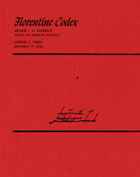 Florentine Codex: Book 1: Book 1: The Gods
Bernardino de Sahagun
University of Utah Press, 1981 Two of the world’s leading scholars of the Aztec language and culture have translated Sahagún’s monumental and encyclopedic study of native life in Mexico at the time of the Spanish Conquest. This immense undertaking is the first complete translation into any language of Sahagún’s Nahuatl text, and represents one of the most distinguished contributions in the fields of anthropology, ethnography, and linguistics.
Written between 1540 and 1585, the Florentine Codex (so named because the manuscript has been part of the Laurentian Library’s collections since at least 1791) is the most authoritative statement we have of the Aztecs’ lifeways and traditions—a rich and intimate yet panoramic view of a doomed people.
The Florentine Codex is divided by subject area into twelve books and includes over 2,000 illustrations drawn by Nahua artists in the sixteenth century.
Book One describes in detail the gods of the Aztec people, including Uitzilopochtli, Tlatoc, and Quetzalcoatl. This colorful and clear translation brings to life characteristics of each god, describing such items as clothing or adornment worn by individual gods, as well as specific personality traits.
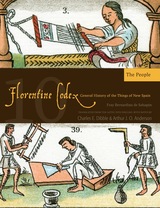 Florentine Codex: Book 10: Book 10: The People
Bernardino de Sahagun
University of Utah Press, 1981 Two of the world’s leading scholars of the Aztec language and culture have translated Sahagún’s monumental and encyclopedic study of native life in Mexico at the time of the Spanish Conquest. This immense undertaking is the first complete translation into any language of Sahagún’s Nahuatl text, and represents one of the most distinguished contributions in the fields of anthropology, ethnography, and linguistics.
Written between 1540 and 1585, the Florentine Codex (so named because the manuscript has been part of the Laurentian Library’s collections since at least 1791) is the most authoritative statement we have of the Aztecs’ lifeways and traditions—a rich and intimate yet panoramic view of a doomed people.
The Florentine Codex is divided by subject area into twelve books and includes over 2,000 illustrations drawn by Nahua artists in the sixteenth century.
Book Ten gives a broad overview of the different occupations, classes, and characteristics of Aztecs during this time period. Arguably the most fascinating part of this book is the detailed documentation of human anatomy and commonly used cures for physical ailments.
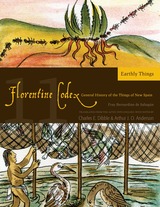 Florentine Codex: Book 11: Book 11: Earthly Things
Bernardino de Sahagun
University of Utah Press, 1963 Two of the world’s leading scholars of the Aztec language and culture have translated Sahagún’s monumental and encyclopedic study of native life in Mexico at the time of the Spanish Conquest. This immense undertaking is the first complete translation into any language of Sahagún’s Nahuatl text, and represents one of the most distinguished contributions in the fields of anthropology, ethnography, and linguistics.
Written between 1540 and 1585, the Florentine Codex (so named because the manuscript has been part of the Laurentian Library’s collections since at least 1791) is the most authoritative statement we have of the Aztecs’ lifeways and traditions—a rich and intimate yet panoramic view of a doomed people.
The Florentine Codex is divided by subject area into twelve books and includes over 2,000 illustrations drawn by Nahua artists in the sixteenth century.
Book Eleven is a beautifully written and careful documentation of all of the animals and plants known to the Aztecs in the sixteenth century. As the volume with the most illustrations, Earthly Things allows the reader to look at the natural world through the eyes of the Aztec.
 Florentine Codex: Book 12: Book 12: The Conquest of Mexico
Bernardino de Sahagun
University of Utah Press, 1975 Two of the world’s leading scholars of the Aztec language and culture have translated Sahagún’s monumental and encyclopedic study of native life in Mexico at the time of the Spanish Conquest. This immense undertaking is the first complete translation into any language of Sahagún’s Nahuatl text, and represents one of the most distinguished contributions in the fields of anthropology, ethnography, and linguistics.
Written between 1540 and 1585, the Florentine Codex (so named because the manuscript has been part of the Laurentian Library’s collections since at least 1791) is the most authoritative statement we have of the Aztecs’ lifeways and traditions—a rich and intimate yet panoramic view of a doomed people.
The Florentine Codex is divided by subject area into twelve books and includes over 2,000 illustrations drawn by Nahua artists in the sixteenth century.
Book Twelve contains a meticulous retelling of the Spanish conquest of Mexico, from the days leading up to the first arrival of Cortes to the eventual submission of the Tlatilulcans, the Tenochtitlans, and their rulers to the Spaniards.
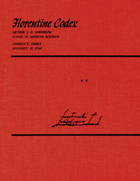 Florentine Codex: Book 2: Book 2: The Ceremonies
Bernardino de Sahagun
University of Utah Press, 1981 Two of the world’s leading scholars of the Aztec language and culture have translated Sahagún’s monumental and encyclopedic study of native life in Mexico at the time of the Spanish Conquest. This immense undertaking is the first complete translation into any language of Sahagún’s Nahuatl text, and represents one of the most distinguished contributions in the fields of anthropology, ethnography, and linguistics.
Written between 1540 and 1585, the Florentine Codex (so named because the manuscript has been part of the Laurentian Library’s collections since at least 1791) is the most authoritative statement we have of the Aztecs’ lifeways and traditions—a rich and intimate yet panoramic view of a doomed people.
The Florentine Codex is divided by subject area into twelve books and includes over 2,000 illustrations drawn by Nahua artists in the sixteenth century.
Book Two gives comprehensive accounts of the religious ceremonies and days of feasting during the time of the Aztecs, including prayers, songs, and the duties and roles of Aztecs inside the temples during the ceremonies. This book also details the various tributes and sacrifices given to specific gods.
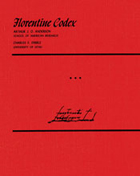 Florentine Codex: Book 3: Book 3: The Origin of the Gods
Bernardino de Sahagun
University of Utah Press, 1981 Two of the world’s leading scholars of the Aztec language and culture have translated Sahagún’s monumental and encyclopedic study of native life in Mexico at the time of the Spanish Conquest. This immense undertaking is the first complete translation into any language of Sahagún’s Nahuatl text, and represents one of the most distinguished contributions in the fields of anthropology, ethnography, and linguistics.
Written between 1540 and 1585, the Florentine Codex (so named because the manuscript has been part of the Laurentian Library’s collections since at least 1791) is the most authoritative statement we have of the Aztecs’ lifeways and traditions—a rich and intimate yet panoramic view of a doomed people.
The Florentine Codex is divided by subject area into twelve books and includes over 2,000 illustrations drawn by Nahua artists in the sixteenth century.
Book Three describes in detail the excitingand sometimes bloody—origin stories of Uitzilopochtli, Titlacauan, and Quetzalcoatl. The appendix discusses other significant religious aspects of the Aztec religion, such as how boys are raised to be high priests and what happens to Aztecs after death.
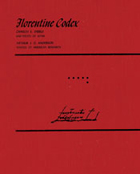 Florentine Codex: Book 6: Book 6: Rhetoric and Moral Philosophy
Bernardino de Sahagun
University of Utah Press, 1969 Two of the world’s leading scholars of the Aztec language and culture have translated Sahagún’s monumental and encyclopedic study of native life in Mexico at the time of the Spanish Conquest. This immense undertaking is the first complete translation into any language of Sahagún’s Nahuatl text, and represents one of the most distinguished contributions in the fields of anthropology, ethnography, and linguistics.
Written between 1540 and 1585, the Florentine Codex (so named because the manuscript has been part of the Laurentian Library’s collections since at least 1791) is the most authoritative statement we have of the Aztecs’ lifeways and traditions—a rich and intimate yet panoramic view of a doomed people.
The Florentine Codex is divided by subject area into twelve books and includes over 2,000 illustrations drawn by Nahua artists in the sixteenth century.
Book Six includes prayers to various gods asking for cures, riches, rain, and for the gods to bless or admonish a chosen ruler. In addition to these prayers, the book displays examples of formal conversation used in Aztec life, from the ruler and ambassador to others in the noble class.
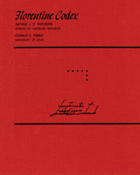 Florentine Codex: Book 7: Book 7: The Sun, the Moon and Stars, and the Binding of the Years
Bernardino de Sahagun
University of Utah Press, 1953 Two of the world’s leading scholars of the Aztec language and culture have translated Sahagún’s monumental and encyclopedic study of native life in Mexico at the time of the Spanish Conquest. This immense undertaking is the first complete translation into any language of Sahagún’s Nahuatl text, and represents one of the most distinguished contributions in the fields of anthropology, ethnography, and linguistics.
Written between 1540 and 1585, the Florentine Codex (so named because the manuscript has been part of the Laurentian Library’s collections since at least 1791) is the most authoritative statement we have of the Aztecs’ lifeways and traditions—a rich and intimate yet panoramic view of a doomed people.
The Florentine Codex is divided by subject area into twelve books and includes over 2,000 illustrations drawn by Nahua artists in the sixteenth century.
Book Seven tells the origin stories of the sun, the moon, and the stars—which gods created them, what powers they each embody, and how they are related to Aztec astrology. This book also discusses the meaning and cause behind hail, lightning, rainbows, wind, and different types of weather.
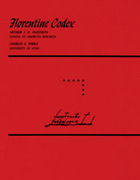 Florentine Codex: Book 8: Book 8: Kings and Lords
Bernardino de Sahagun
University of Utah Press, 1954 Two of the world’s leading scholars of the Aztec language and culture have translated Sahagún’s monumental and encyclopedic study of native life in Mexico at the time of the Spanish Conquest. This immense undertaking is the first complete translation into any language of Sahagún’s Nahuatl text, and represents one of the most distinguished contributions in the fields of anthropology, ethnography, and linguistics.
Written between 1540 and 1585, the Florentine Codex (so named because the manuscript has been part of the Laurentian Library’s collections since at least 1791) is the most authoritative statement we have of the Aztecs’ lifeways and traditions—a rich and intimate yet panoramic view of a doomed people.
The Florentine Codex is divided by subject area into twelve books and includes over 2,000 illustrations drawn by Nahua artists in the sixteenth century.
Book Eight lists the rulers of Tenochtitlan from the first, Acamapichtli, to the sixteenth, Don Cristobal Cecepatic. It also documents the rulers of the ancient Aztec cities of Tlatillco, Texcoco, and Uexotla. Several chapters are devoted to describing the various articles of clothing that the rulers and noblemen wore and the foods they ate for differing ceremonies and activities.
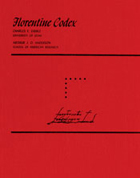 Florentine Codex: Book 9: Book 9: The Merchants
Bernardino de Sahagun
University of Utah Press, 1959 Two of the world’s leading scholars of the Aztec language and culture have translated Sahagún’s monumental and encyclopedic study of native life in Mexico at the time of the Spanish Conquest. This immense undertaking is the first complete translation into any language of Sahagún’s Nahuatl text, and represents one of the most distinguished contributions in the fields of anthropology, ethnography, and linguistics.
Written between 1540 and 1585, the Florentine Codex (so named because the manuscript has been part of the Laurentian Library’s collections since at least 1791) is the most authoritative statement we have of the Aztecs’ lifeways and traditions—a rich and intimate yet panoramic view of a doomed people.
The Florentine Codex is divided by subject area into twelve books and includes over 2,000 illustrations drawn by Nahua artists in the sixteenth century.
Book Nine begins with how commerce grew in Mexico from the trade of only feathers to jewelry, precious stones, animal skins, embroidered clothing, and chocolate. It discusses how the merchants prepare for a journey and the celebrations that take place when they arrive home safely. This book also lists different types of merchants, such as lapidaries, who worked with precious stones, and ornamenters, who made feather articles.
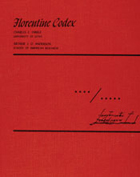 Florentine Codex: Books 4 and 5: Book 4 and 5: The Soothsayers, the Omens
Bernardino de Sahagun
University of Utah Press, 1981 Two of the world’s leading scholars of the Aztec language and culture have translated Sahagún’s monumental and encyclopedic study of native life in Mexico at the time of the Spanish Conquest. This immense undertaking is the first complete translation into any language of Sahagún’s Nahuatl text, and represents one of the most distinguished contributions in the fields of anthropology, ethnography, and linguistics.
Written between 1540 and 1585, the Florentine Codex (so named because the manuscript has been part of the Laurentian Library’s collections since at least 1791) is the most authoritative statement we have of the Aztecs’ lifeways and traditions—a rich and intimate yet panoramic view of a doomed people.
The Florentine Codex is divided by subject area into twelve books and includes over 2,000 illustrations drawn by Nahua artists in the sixteenth century.
Book Four delves into the Aztec’s complex astrological beliefs. The date of birth was so significant that it ultimately determined one’s personality and future; for example, almost all born on the second day sign—called One Ocelot—became slaves.
Book Five explains the meaning of the many evil omens Aztecs believed in, which usually took the form of animals and insects. It describes the consequences of each omen and the remedies, if any, that will reverse these effects.
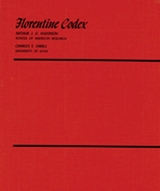 Florentine Codex: Introduction and Indices: Introductory Book
Bernardino de Sahagun
University of Utah Press, 1982 Two of the world’s leading scholars of the Aztec language and culture have translated Sahagún’s monumental and encyclopedic study of native life in Mexico at the time of the Spanish Conquest. This immense undertaking is the first complete translation into any language of Sahagún’s Nahuatl text, and represents one of the most distinguished contributions in the fields of anthropology, ethnography, and linguistics.
Written between 1540 and 1585, the Florentine Codex (so named because the manuscript has been part of the Laurentian Library’s collections since at least 1791) is the most authoritative statement we have of the Aztecs’ lifeways and traditionsa rich and intimate yet panoramic view of a doomed people.
The Florentine Codex is divided by subject area into twelve books and includes over 2,000 illustrations drawn by Nahua artists in the sixteenth century.
This introduction to the Florentine Codex contains the original prologues to each volume written by Bernadino de Sahagun, which detail his intentions and personal experiences in compiling the Codex. Authors Dibble and Anderson dig into Sahagun’s past in “Sahagun’s Historia” and “Sahagun: Career and Character,” and discuss dating the Codex in “The Watermarks in the Florentine Codex.” This volume also includes indices of subject matter, persons and deities, and places for all twelve books.
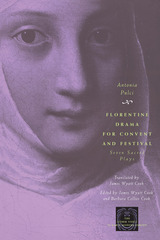 Florentine Drama for Convent and Festival: Seven Sacred Plays
Antonia Pulci
University of Chicago Press, 1996 A talented poet and a gifted dramatist, Antonia Pulci (1452-1501) pursued two vocations, first as a wife and later as founder of an Augustinian order. During and after her marriage, Pulci authored several sacre rappresentazioni—one-act plays on Christian subjects. Often written to be performed by nuns for female audiences, Pulci's plays focus closely on the concerns of women. Exploring the choice that Renaissance women had between marriage, the convent, or uncloistered religious life, Pulci's female characters do not merely glorify the religious life at the expense of the secular. Rather, these women consider and deal with the unwanted advances of men, negligent and abusive husbands and suitors, the dangers of childbearing, and the disappointments of child rearing. They manage households and kingdoms successfully. Pulci's heroines are thoughtful; their capacity for analysis and action regularly resolve the moral, filial, and religious crises of their husbands and admirers.
Available in English for the first time, this volume recovers the long muted voice of an early and important female Italian poet and playwright.
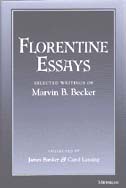 Florentine Essays: Selected Writings of Marvin B. Becker
Marvin B. Becker
University of Michigan Press, 2002 James Banker and Carol Lansing have shaped a collection of the works of Marvin B. Becker, a respected scholar in Florentine and Renaissance history. Becker began his work in 1953 when he arrived in Florence as a Fulbright Scholar, only eight years after the end of World War II. Italy was still struggling with the turbulent wake of the war's end. In those chaotic circumstances, Becker commenced his study of the tumultuous past of Florentine society, producing a rich amount of scholarly work to enhance the field.
In the capital of humanism, he initiated what was to be a lifelong examination of the Western civil tradition. In Florence he could study the interplay of ideas and action in what he was to call the "public world." The rise of this world out of the private, feudal and corporate structures of the medieval commune, its functioning and its eventual subversion by the authoritarian structures of the early modern state were, he thought, valuable information for modern political cultures. In the 1950s and 1960s, Becker produced approximately twenty papers dealing with a wide variety of themes and issues raised by the work of other scholars such as Davidson, Salvemini, Ottokar, Panella, Rodolico, Barbadoro, Baron, and others. He also introduced his own formulations on a range of subjects including the political role of Florence's minor guilds, usury, taxation, public debt, popular heresy, church-state relations, the city's chroniclers, the influence of "new men" upon Florentine government and changing mentalities.
These papers, in their originality, their richness of documentation and their suggestiveness, are still relevant for current scholarship. The editors of this volume have chosen the papers for the convenience of readers who may know Becker only through his books, or from the myriad of footnotes of other scholars who have drawn so much from his work. This volume will be of interest to scholars, students, and others interested in Renaissance history, whether it be social or political.
Marvin B. Becker is Professor Emeritus in the Department of History, University of Michigan. James Banker is Professor of History, North Carolina State University. Carol Lansing is Professor of History, University of California, Santa Barbara.
Florentine Merchants in the Age of the Medici: Letters and Documents from the Selfridge Collection of Medici Manuscripts
Gertrude R. B. Richards
Harvard University Press This contribution to the economic history of the Renaissance in Italy is based upon material in the Selfridge Collection of Medici manuscripts lent to the Graduate School of Business Administration of Harvard University by Mr. H. Gordon Selfridge of London, material never before available to the public. The work is designed to show something of the rich content of the Collection as a whole, covering the closing years of the fifteenth century, a time of great political confusion and of economic depression, and including bills of exchange, articles of association, correspondence between Florentine merchants and their agents who were located in Pera (a suburb of Constantinople), and also a glossary of business and historical terms found in the manuscripts, illustrations of certain pages, and a biographical appendix.
Florentine Painting and Its Social Background: The Bourgeois Republic before Cosimo de’ Medici’s Advent to Power, XIV and Early XV Centuries
Frederic Antal
Harvard University Press, 1986 An eminent art historian gives us here a full account of the history of Florentine art in the fourteenth and early fifteenth centuries as well as a stimulating exploration of questions about the social content of art. Frederick Antal sketches a portrait of Florence in this richly productive period—the economic and social conditions as well as religious tenets and intellectual controversies. He traces the course of painting and sculpture from Giotto to Brunelleschi and Masaccio, and shows how major stylistic developments are related to changing economic and social structures. His analysis is fully illustrated by 210 halftones.
 Florentine Public Finances in the Early Renaissance, 1400-1433
Anthony Molho
Harvard University Press, 1971 In his application of statistical methods to history, Mr. Molho offers a new approach to the study of Florentine politics.
Scholars have long recognized that Florence’s deficit-financing of its wars of independence against the Visconti of Milan had far-reaching economic, political, and social effects, but this is the first document-based history to provide concrete support for that general knowledge.
Focusing on the governmental and fiscal agencies of Florence as well as a number of memoirs and account hooks written by Florentine citizens, Mr. Molho has gathered and statistically reconstructed much archival material on Florentine taxation, public income, and expenses.
He concludes that between 1423 and 1433 Florence underwent a prolonged and vast fiscal crisis that affected both the fiscal structure of the city and its constitutional and institutional framework. His work thus sheds new light on Cosimo de’ Medici’s rise to power in 1434.
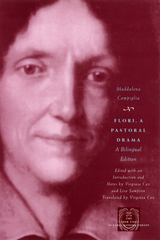 Flori, a Pastoral Drama: A Bilingual Edition
Maddalena Campiglia
University of Chicago Press, 2004 One of the first pastoral dramas published by an Italian woman, Flori is Maddalena Campiglia's most substantial surviving literary work and one of the earliest known examples of secular dramatic writing by a woman in Europe.
Although acclaimed in her day, Campiglia (1553-95) has not benefited from the recent wave of scholarship that has done much to enhance the visibility and reputation of contemporaries such as Isabella Andreini, Moderata Fonte, and Veronica Franco. As this bilingual, first-ever critical edition of Flori illustrates, this neglect is decidedly unwarranted. Flori is a work of great literary and cultural interest, noteworthy in particular for the intensity of its focus on the experiences and perceptions of its female protagonists and their ideals of female autonomy. Flori will be read by those involved in the study of early modern literature and drama, women's studies, and the study of gender and sexuality in this period.
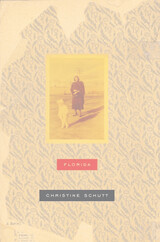 Florida
Christine Schutt
Northwestern University Press, 2003 Finalist for the 2004 National Book Award
Florida is the portrait of the artist as a young woman, an orphan's story full of loss and wonder, a familiar tale told in original language. Alice Fivey, fatherless at age seven, is left in the care of her relatives at ten when her love-wearied mother loses custody of her and submits to the sanitarium and years of psychiatric care. A namesake daughter locked in the orphan's move-around life, she must hold still while the seamstress pins her into someone not her mother. But they share the same name, so she is her mother, isn't she?
Alice finds consolation in books and she herself is a storyteller who must build a home for herself word by right word. Florida is her story, recalled in brief scenes of spare beauty and strangeness as Alice moves from house to house, ever further from the desolation of her mother's actions, ever closer to the meaning of her experience. In this most elegiac and luminous novel, Schutt gives voice to the feast of memory, the mystery of the mad and missing, and above all, the life-giving power of language.
|
|
